
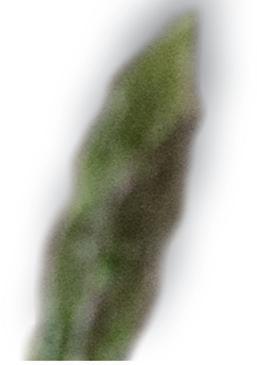

















Virginia Farm Bureau





Take a trip around
with ag passports






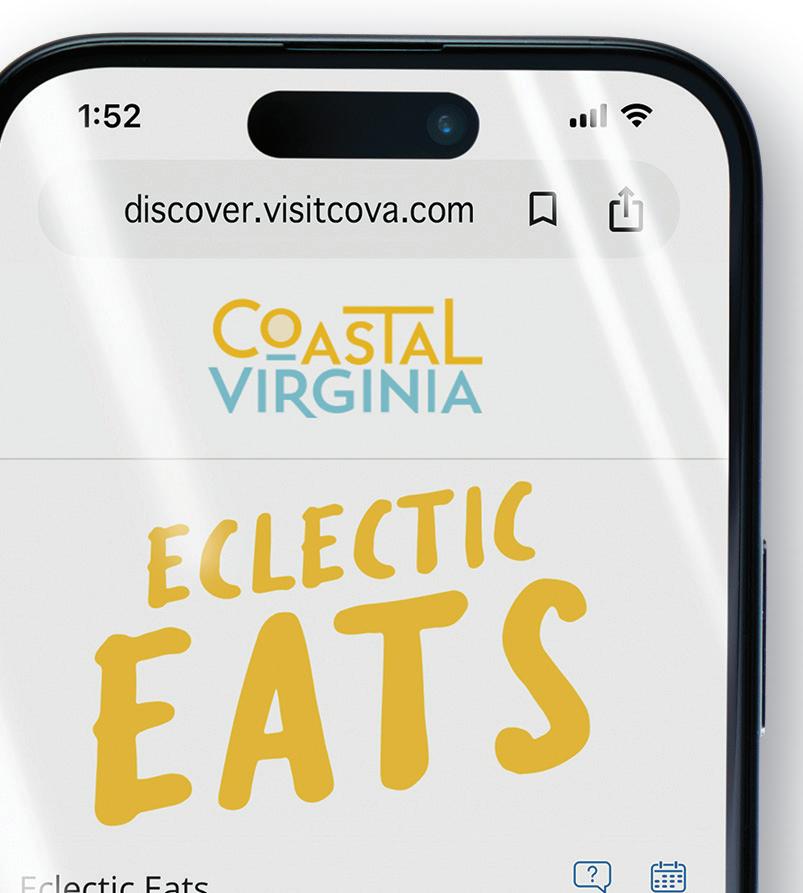
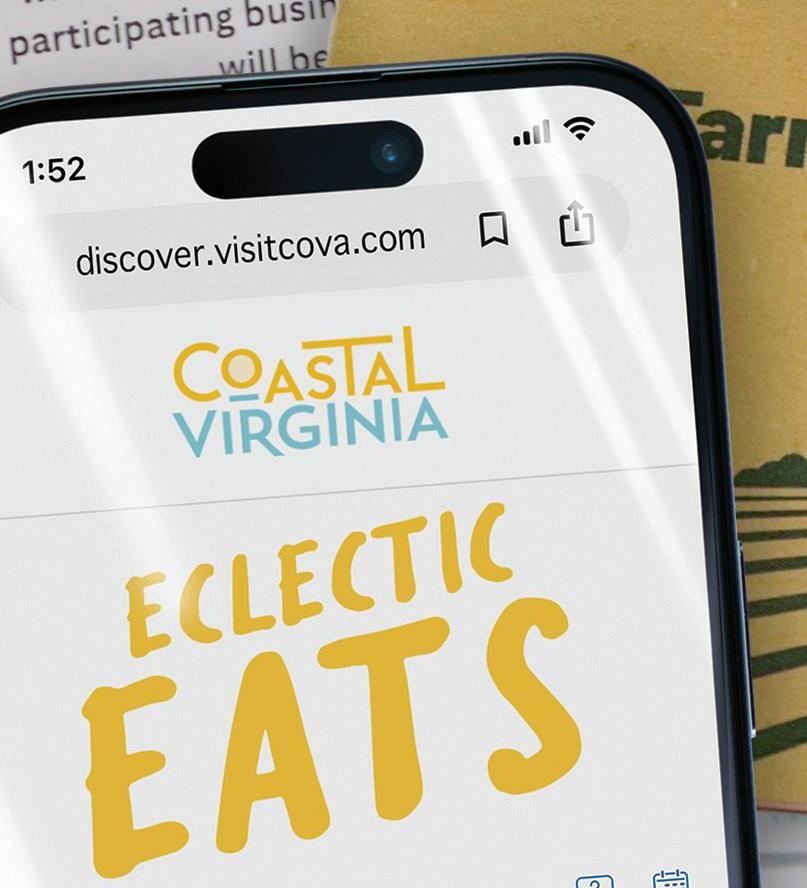
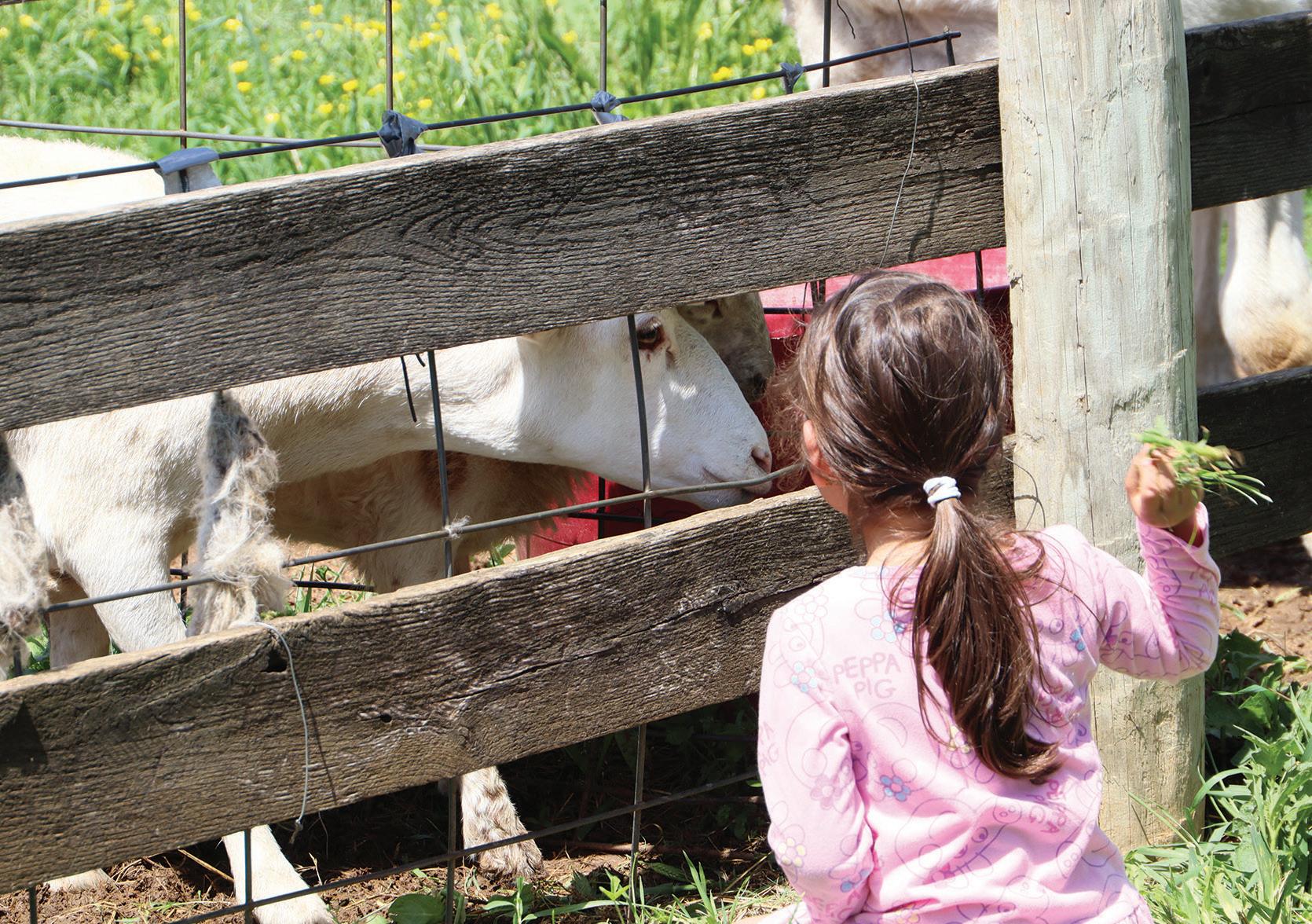

“The passport lets the community know that all these farm markets are here!”
Volume 18, Number 3 Summer 2025
Cultivate (USPS 025051) (ISSN 1946-8121) is published four times a year. February, May, August, October. It is published by Virginia Farm Bureau Federation, 12580 West Creek Parkway, Richmond, VA 23238. Periodicals postage rate is paid at Richmond, VA and additional mailing offices. The annual Subscription Rate is $1.13 (included in membership dues).
Postmaster: Please send changes of address to, Cultivate, Virginia Farm Bureau Federation, P.O. Box 27552, Richmond, VA 23261; fax 804-290-1096. Editorial and business offices are located at 12580 West Creek Parkway, Richmond, VA 23238. Telephone 804-290-1000, fax 804-290-1096. Email address is Cultivate@vafb.com. Office hours are 8 a.m. to 4:30 p.m., Monday through Friday.
All advertising is accepted subject to the publisher’s approval. Advertisers must assume liability for the content of their advertising. The publisher assumes no liability for products or services advertised. The publisher maintains the right to cancel advertising for nonpayment or reader complaints about services or products.
Member: Virginia Press Association
Ancient mosses can ‘grow on just about anything’ and also provide groundcover in shady parts of gardens and yards.
Some unsung garden heroes like moths, flies, beetles and wasps play a mighty role in pollinating plants and devouring pests.
Local passports promote exploration of farm markets, orchards, greenhouses and other agritourism operations.
Worms are soils’ stars, helping with decomposition, nutrient cycling, soil aeration, carbon regulation and improving water flow and soil structure.
Associate members will receive their next issue of Cultivate in October. The magazine is published quarterly, and back issues can be viewed at issuu.com/virginiafarmbureau
— KAYLA LAWRENCE , Richard's Fruit Market, Frederick County
EDITORIAL TEAM
Kathy Dixon Assistant Director, Online & Print Communications
Nicole Zema Sr. Staff Writer/Photographer
Christina Amano Dolan Staff Writer/ Photographer
Kenny Kane Graphic Design Manager
Eleanor Stickley Sr. Graphic Designer
Alice Kemp Sr. Staff Writer/Advertising Coordinator
MEMBERS — Address change? If your address or phone number has changed, or is about to change, contact your county Farm Bureau. They will update your membership and subscription information.
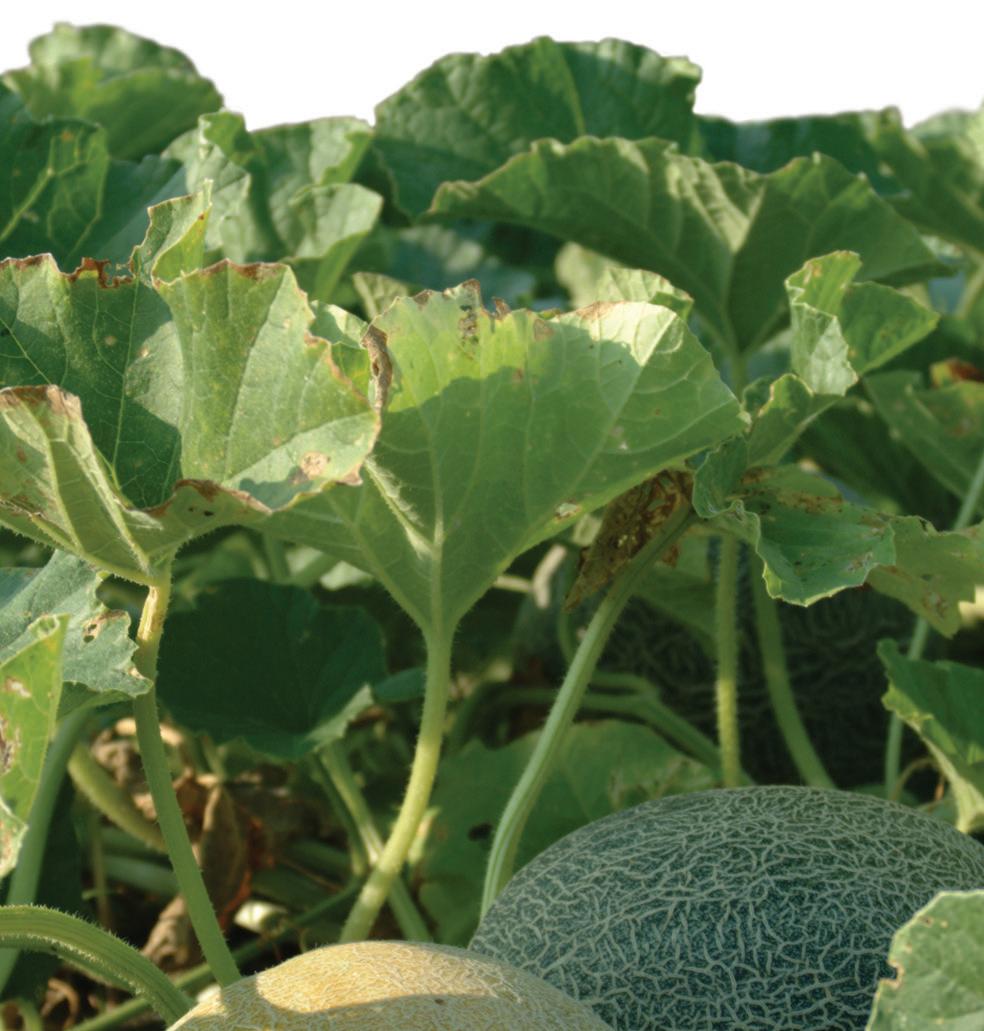

Cantaloupe: Cousin to cucumber, honeydew, pumpkin and watermelon
You can get your hands on scrumptious cantaloupes yearround, but this type of melon is in its finest, freshest form in July and August.
About 90% of cantaloupes are grown in California, Arizona and Texas, but 155 Virginia farms grow them on 301 acres. According to the 2022 agriculture census, most of the commonwealth’s cantaloupes

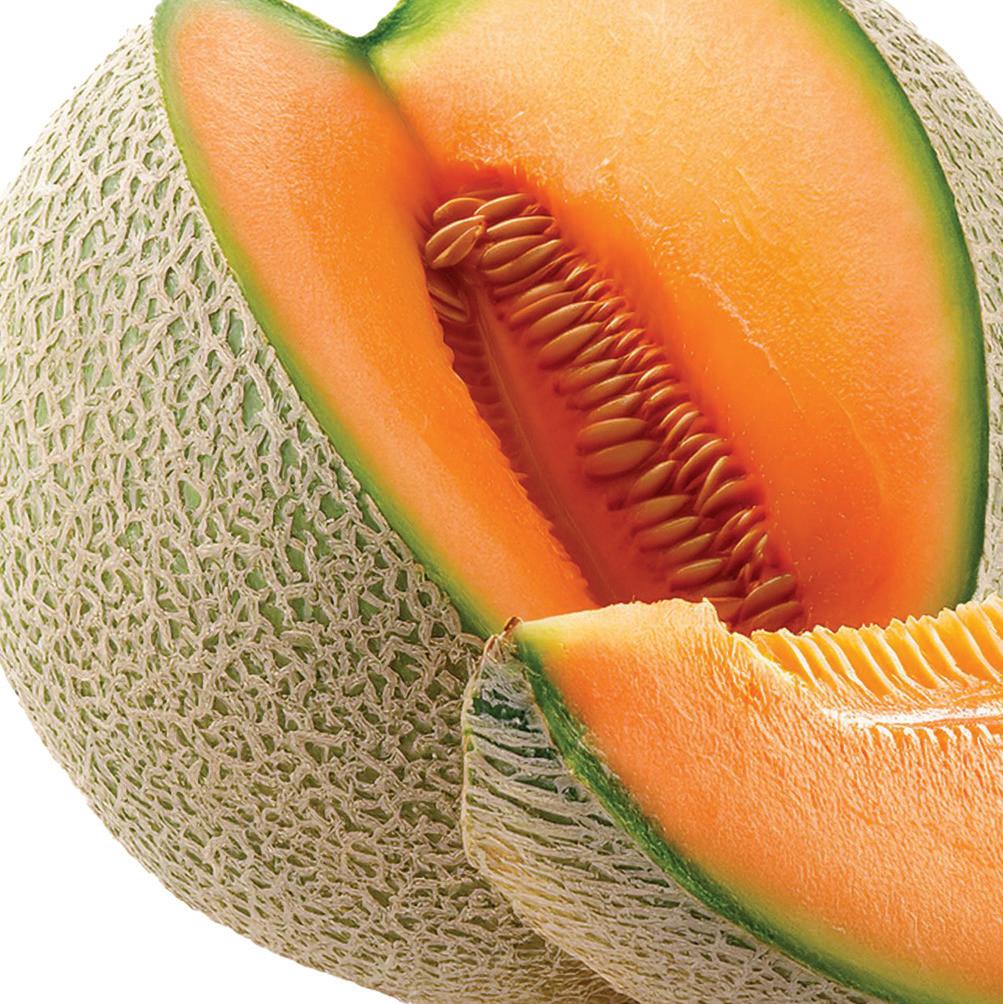



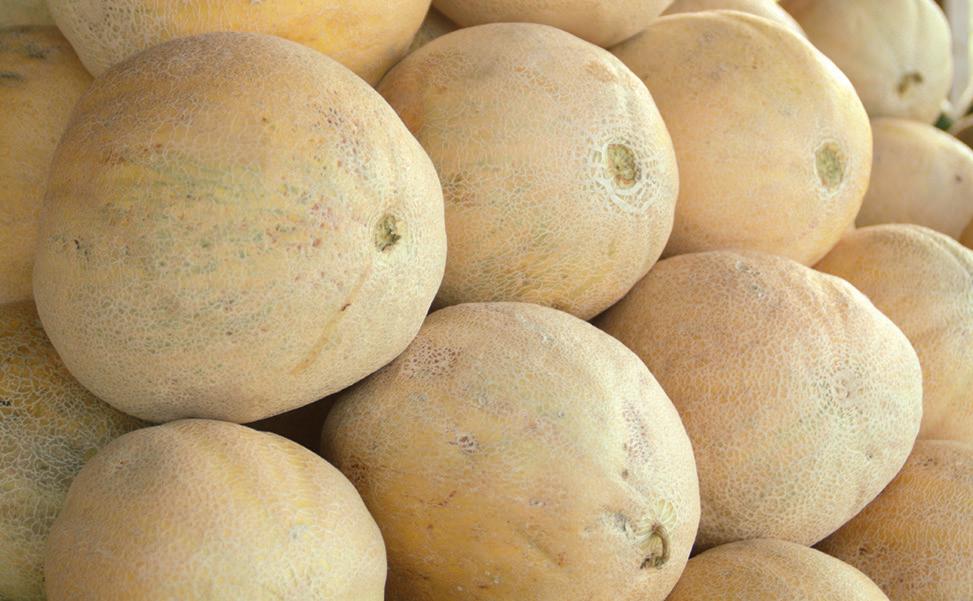
are grown in the Northern Neck and in Hanover, Halifax and New Kent counties.
According to Virginia Cooperative Extension, cantaloupes were brought from Armenia to the papal state of Cantaluppe, Italy, in the 1400s. Melons arrived in the New World with Columbus and continued moving west with the Spaniards in 1683, Extension explained. The first commercial melon hybrid, “Burpee Hybrid,” was introduced in 1955.
Cantaloupes are the most popular type of melon in the U.S. With their sweet flesh and nutritional value, it’s no wonder!
Whether cubed, pureed or even
pickled, cantaloupes are an excellent source of vitamins A and C and potassium, and contain carotenoids that may be good for health.
Cantaloupe’s flavor is sweet, with a unique musky aroma that is often described as a combination of honeydew melon, peach and pear.
To make sure your cantaloupe is the best it can be, choose fragrant, symmetrical melons that are heavy and have yellow or creamy-colored skin and no visible bruises. The stem end should give to gentle pressure.
Uncut cantaloupes can be stored at room temperature for up to one week. Cut melons can be refrigerated in an airtight container for up to five days.
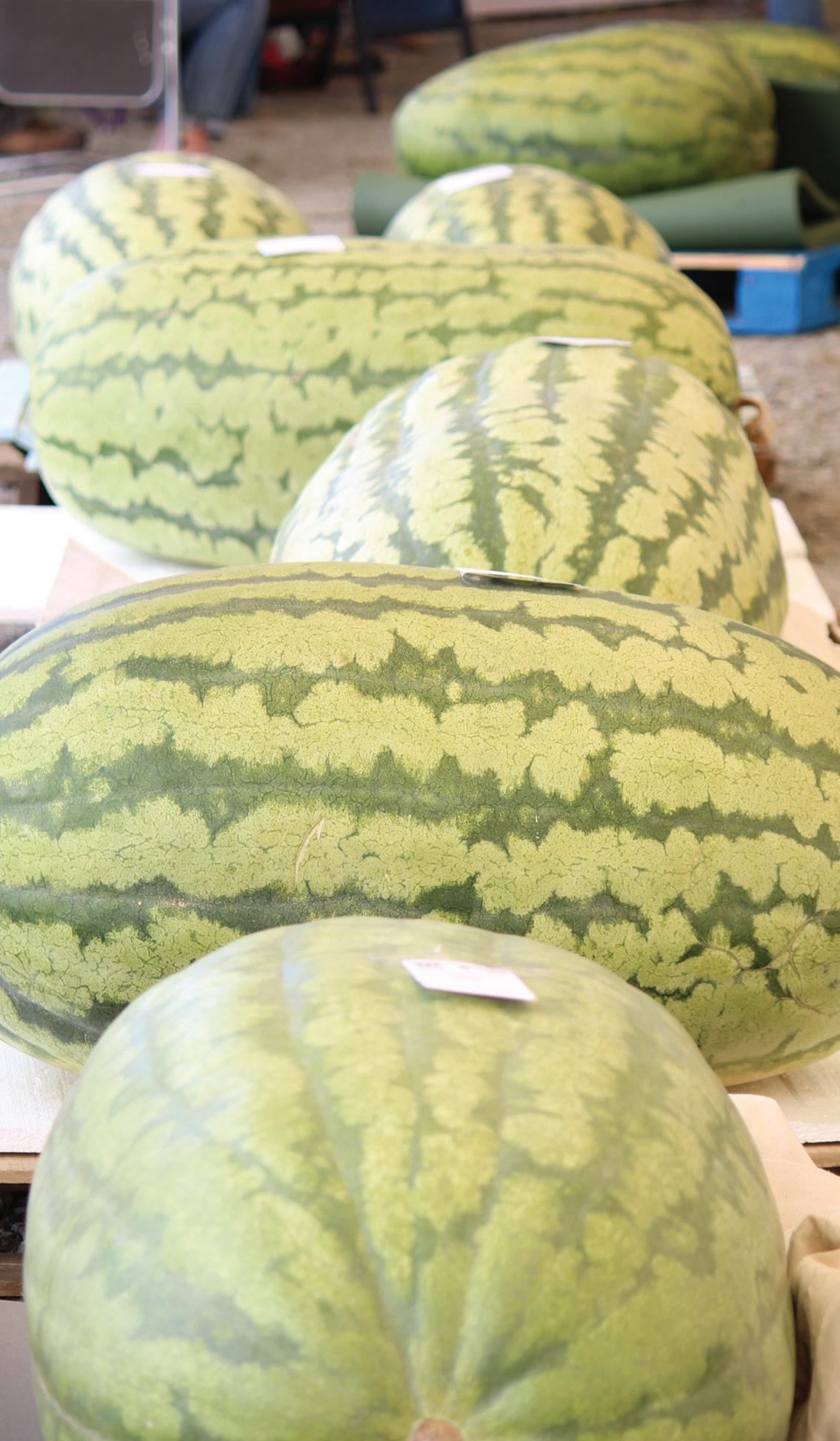
Featured this month on Real Virginia, Virginia Farm Bureau’s weekly television program:
• Visit some of Virginia’s watermelon farms found along a specially dedicated trail.
• Discover how fishermen are catching invasive catfish to prevent them from destroying other aquatic life.
• Find out how farm families are managing child care challenges.
Real Virginia airs nationwide at 4:30 p.m. on the first and third Saturdays of each month in the Voices of Agriculture program on RFD-TV on Dish Network and DirecTV; and on selected cable outlets around the state. It airs weekly on WBRA digital channel 15.2, the WHRO World Channel, WVVA Bluefield and WTKR Norfolk, and on the first and third Sundays of each month at 10 a.m. on WVIR Charlottesville and at 10:30 a.m. on WHSV Harrisonburg; and on the first and third Saturdays at 8 a.m. on WRLH Richmond and at 5:30 a.m. on WSLS Roanoke.
That’s how many species of moths are in Virginia. While not often associated with pollination, moths are one of the unsung heroes that contribute to pollinating one-third of all foods and beverages. See related article on page 13.
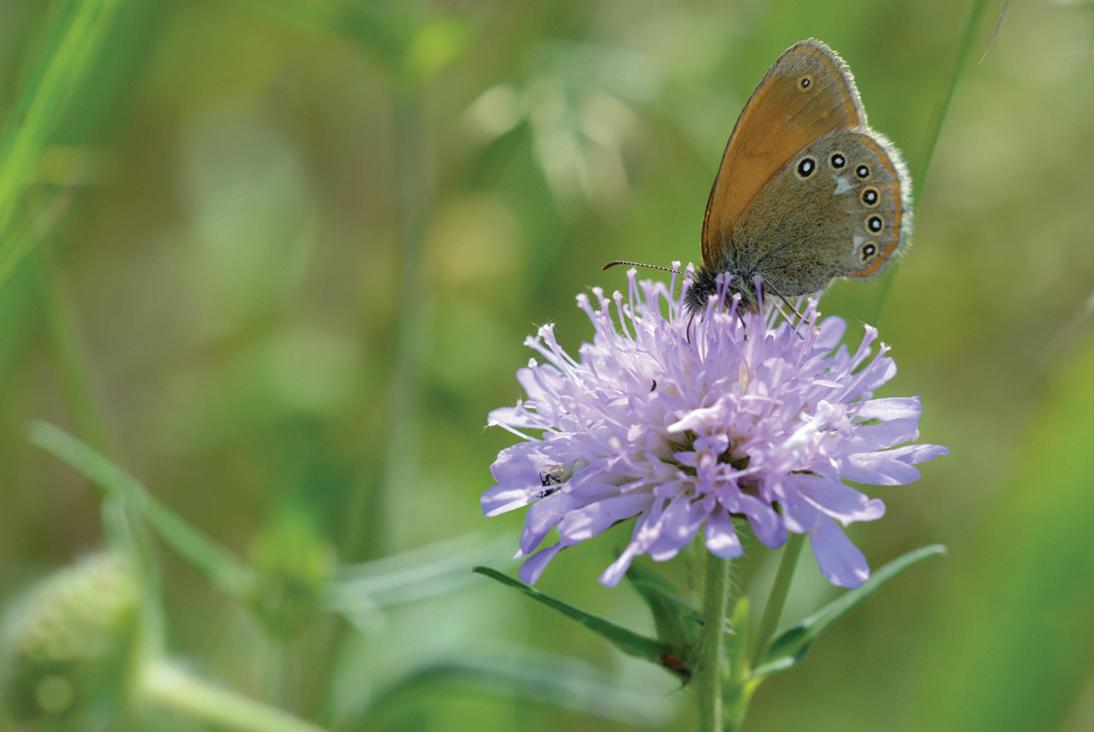

The State Fair of Virginia is where real stories, thrills and delights come to life.
Visitors to the State Fair Sept. 26 through Oct. 5 at The Meadow Event Park in Caroline County can explore all that makes the commonwealth special by experiencing a variety of attractions, entertainment, shopping, food and Virginia agriculture.
Themed “Real Fun, Real Virginia,” the fair melds endless amusements with enriching discoveries.
“Our goal is to be the region’s best family entertainment option while serving the mission of telling Virginia’s story,” said Marlene Pierson-Jolliffe, the fair’s executive director.
Exciting new attractions will include a flying disc dog show, a blacksmith championship, agriculture-themed miniature golf, an educational traveling wolf pack called Wolves of the World and new strolling acts. Returning fair favorites include the famed racing pigs of Rosaire’s Royal Racers, chainsaw artist Chad Gainey, Revenge Roughstock Rodeo, Greenlee Draft Horse Hitch and Triple Crown Circus. The Main Stage Concert Series will offer something for everyone throughout the fair’s run, including Dennis Lee’s variety show at 11:30 a.m. and 2 p.m. Monday through Friday. Nighttime performances include new country music artist Drew Baldridge, The Australian Bee Gees, former America’s Got Talent contestant and country artist Chapel Hart, contemporary Christian singer Katy Nichole, ʻ60s pop music artist Peter


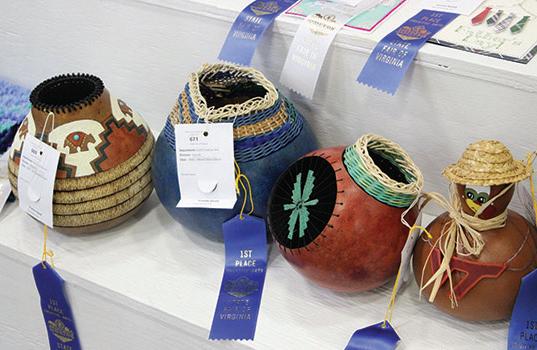










Noone, classic country band Diamond Rio, heavy metal band Quiet Riot, Yacht Rock Schooner with ʻ70s and ʻ80s hits, and bluegrass artist Junior Sisk.
Fairgoers can elevate their experience and unwind in style with “Sunsets & Scholarships,” a new fundraising event to benefit fair scholarships and youth programming. Ticketed guests will receive exclusive evening access to historic Meadow Hall with light hors d’oeuvres, a private cash bar and indoor restrooms; and parking and gate admission. Visit StateFairVa.org to reserve your day or week—availability is limited.
Since 2013, the fair has awarded 2,609 scholarships and over $1 million to support youth education. The fair offers youth more than $100,000 each year in scholarship funds through 4-H, FFA and vocational competitions and specific equine, fine arts and horticulture competitions.
Bakers and creators from across Virginia will vie for coveted blue ribbons in State Fair contests. New culinary categories include picnic potluck dishes, sourdough bread, a milkshake contest sponsored by Southland Dairy Farmers and burger grilling competition sponsored by Virginia Beef Council. Quilts, photographs, paintings and other traditional creative arts submissions will be on display, along with Virginia Farm Bureau antiques and interesting objects in honor of the organization’s upcoming centennial.
Fairgoers also can indulge in funnel cakes, turkey legs and other classics as well as new treats—like deep fried onion
and cauliflower, chicken and waffles, and crepes.
Virginia’s largest classroom continues to offer a multitude of agricultural activities, with milking demonstrations, the Young MacDonald’s Farm exhibit, a horticulture tent featuring awardwinning giant produce, and equine and livestock exhibits.
New this year is a Youth Career Exploration Day Sept. 30 from 10 a.m. to 2 p.m. as part of the fair’s Educational Expo. Industries, companies and schools are invited to connect with students and fairgoers about career and educational opportunities in their fields. Exhibitors must register online by Aug. 15.
The fair is offering a variety of ticket promotions and discounts, including a new Family Four Pack for advanced sale Sept. 1-25; an all-week Fair Fan Pass; and discounts for children, seniors, active-duty service members and veterans, and Farm Bureau members.
Mark your calendar, and make it a fair to remember! For ticket and entertainment information, visit StateFairVa.org. Additional live updates can be found by following the fair on Facebook at Facebook.com/StateFairVa and Instagram @statefairva
The State Fair is held each fall at its permanent home at The Meadow Event Park in Caroline County and attracts 250,000 fairgoers. In 2024, the fair was among 150 diverse events that drew more than 545,235 visitors to The Meadow. The venue had an overall regional economic impact of $41.5 million.































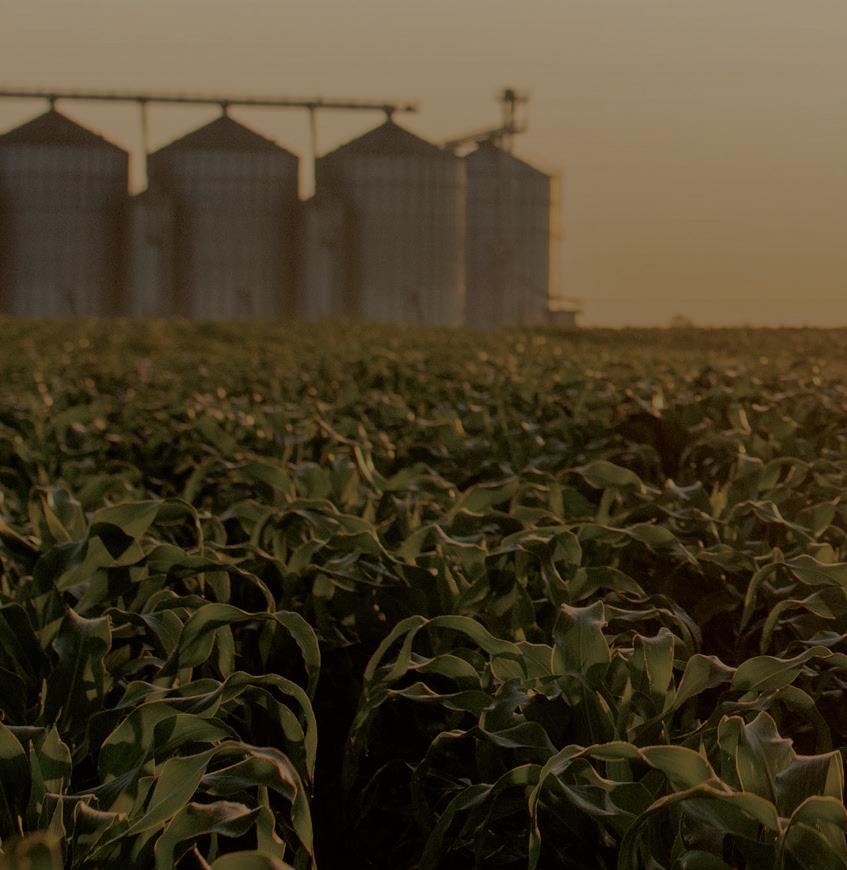


Affinity Cellular operates on the nation’s largest and most dependable network, and has been providing service to membership organizations since 2011.
Affinity Cellular offers a wide array of plans and phones with a focus on talk and text only, with lower data consumption. You select the phone and plan that best fit your needs!
Virginia Farm Bureau members enjoy exclusive benefits, including a $75 airtime credit, free activation ($35 value) and free shipping. Members have the option to keep their current phones (subject to network compatibility), select from the latest iPhone or Android devices, or choose a simple flip phone. They also may keep their existing cell phone numbers.
To set up a plan with Affinity Cellular, visit vafb.com/benefits, log in as a Virginia Farm Bureau member, and go to the Affinity Cellular tab. Use the dedicated website link or phone number provided.
* Under Affinity Cellular’s Fair Use Policy, the company has established usage thresholds of 5,000 minutes for voice and 5,000 texts. On our Unlimited Data Plan, the fair use threshold is 35GB of data. If this amount is exceeded, it will result in throttling of data. Usage that exceeds the monthly usage will be considered a violation of this Fair Use Policy and subject to overage charges.”
Whether you’re looking for an upscale hotel, an all-inclusive resort or something in between, Wyndham Hotels & Resorts has the right hotel for you!
As a Virginia Farm Bureau member, you will save up to 20% off the “best available rate” at over 8,000 participating hotels worldwide. Reservations are required, and blackout dates may apply.

Biltmore Estate in Asheville, North Carolina, is America’s largest home. Built by George and Edith Vanderbilt, this 8,000acre property offers beautiful gardens, biking, carriage rides, horseback riding, kayaking, paddle boarding and more.
Farm Bureau members in Virginia will receive up to $13 off daytime admission to the historic Biltmore estate. Members also can realize reduced rates at The Inn on Biltmore Estate, The Village Hotel and a variety of local accommodations.
While there, browse through unique estate shops for wine lovers, gardeners, bookworms and everyone in between. Savor complimentary tastings of more than 20 handcrafted wines; view rare treasures from the Biltmore collection; and learn about the estate’s barnyard animals.
Visit Biltmore.com/corporateperk for more information. Tickets must be purchased in advance.
No one knows when a stroke or cardiovascular issue will arise, so why not get screened to assess your risk for stroke, heart attack and related issues?
Virginia Farm Bureau members can save on four noninvasive vascular health screenings that may give you peace of mind. For just $135, members can be screened for carotid artery, abdominal aortic aneurysm, atrial fibrillation and peripheral arterial disease. They also receive a free osteoporosis scan.
Healthcare professionals use the latest technology to provide hospital-quality preventive screenings, and boardcertified physicians carefully review your results.
Visit vafb.com/benefits, go to the Life Line Screening tab and log in as a Virginia Farm Bureau member to sign up.





or visit . Use the Virginia vafb.com/ benefits


To take advantage of this discount rate, call 877-670-7088 wyndhamhotels.com/farm-bureau Farm Bureau identification number, available at and from your county Farm Bureau, when making a reservation. Present your membership card when you check in.
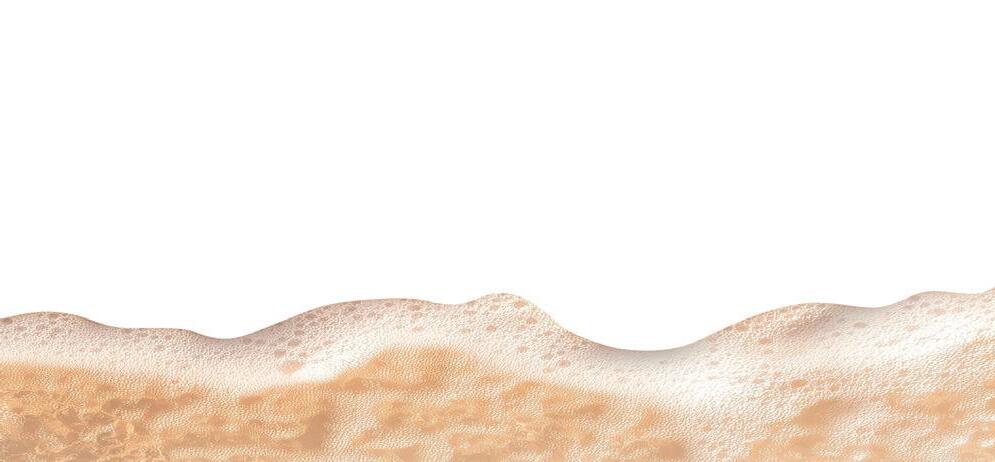
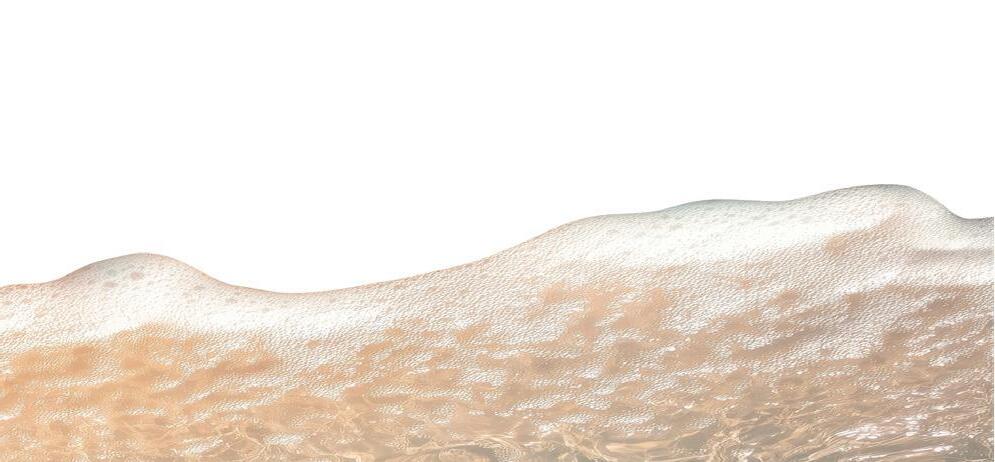



BY CHRISTINA AMANO DOLAN



or swimming pool owners, it’s critical to anticipate the unimaginable.
According to the U.S. Consumer Product Safety Commission, drowning is the leading cause of unintentional death among children ages 1-4.
An average of 358 pool- or spa-related fatal drownings were reported each year between 2019 and 2021.
Approximately 6,300 nonfatal drowning injuries treated in hospital emergency departments were reported annually between 2020 and 2022. Most incidents involved children under 5 years old.
CPSC launched its “Pool Safely: Simple Steps to Save Lives” campaign in 2010 to help reduce childhood
drownings, submersion injuries and entrapment. Parents, caregivers and pool owners can take simple steps to make pools and spas safer.
A lack of adult supervision is a primary factor in many poolrelated drowning incidents, with most victims found missing for only a few minutes, according to CPSC.
“The supervision of children is paramount because a child can drown quickly even in shallow water,” emphasized Kim Price, farm and field underwriting manager for Virginia Farm Bureau Mutual Insurance Co.
CPSC also urges pool owners to install and maintain effective barriers around pools and spas to prevent unauthorized access by young children. These include fences, gates, pool covers and door and pool alarms.









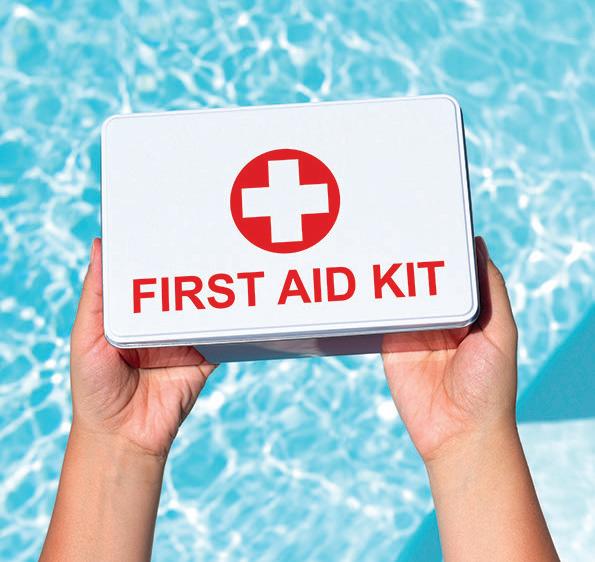
According to the Virginia Department of Health, all pool fences should:
� Completely surround the pool.
� Be at least 4 feet high.
� Have a self-closing and self-latching device that is out of children’s reach.
� Open outward and away from the pool.
� Be constructed so that a child cannot get over, under or through the fence. Remove any structures, equipment or other objects that can be used to climb the fence.
In-ground pools insured through VFBMIC are required to have a fence at least 4 feet high with self-latching gates surrounding the entire pool’s immediate area. Insured aboveground pools without attached decking must have at least a 4-foot perimeter height with a removable ladder.
The Virginia Graeme Baker Pool and Spa Safety Act requires that proper pool drain covers and secondary anti-entrapment systems be installed to prevent serious injury or death of pool and spa users.


Other life-saving steps include:
� Teach children basic water safety rules and swimming skills. Everyone should know what to do in case of an emergency.
� Learn CPR and other life-saving techniques. Be prepared to respond to a water emergency.
� Have appropriate safety equipment and resources readily available, like reaching or throwing aids. These should be kept on both sides of the pool, along with a first aid kit and a nearby phone with emergency numbers listed.
� Fence, securely cover or empty and put away portable pools, including inflatable models.
� Report any unsafe pool toys or products to CPSC to ensure they are not a hazard to children.
Visit poolsafely.gov for more life-saving tips.









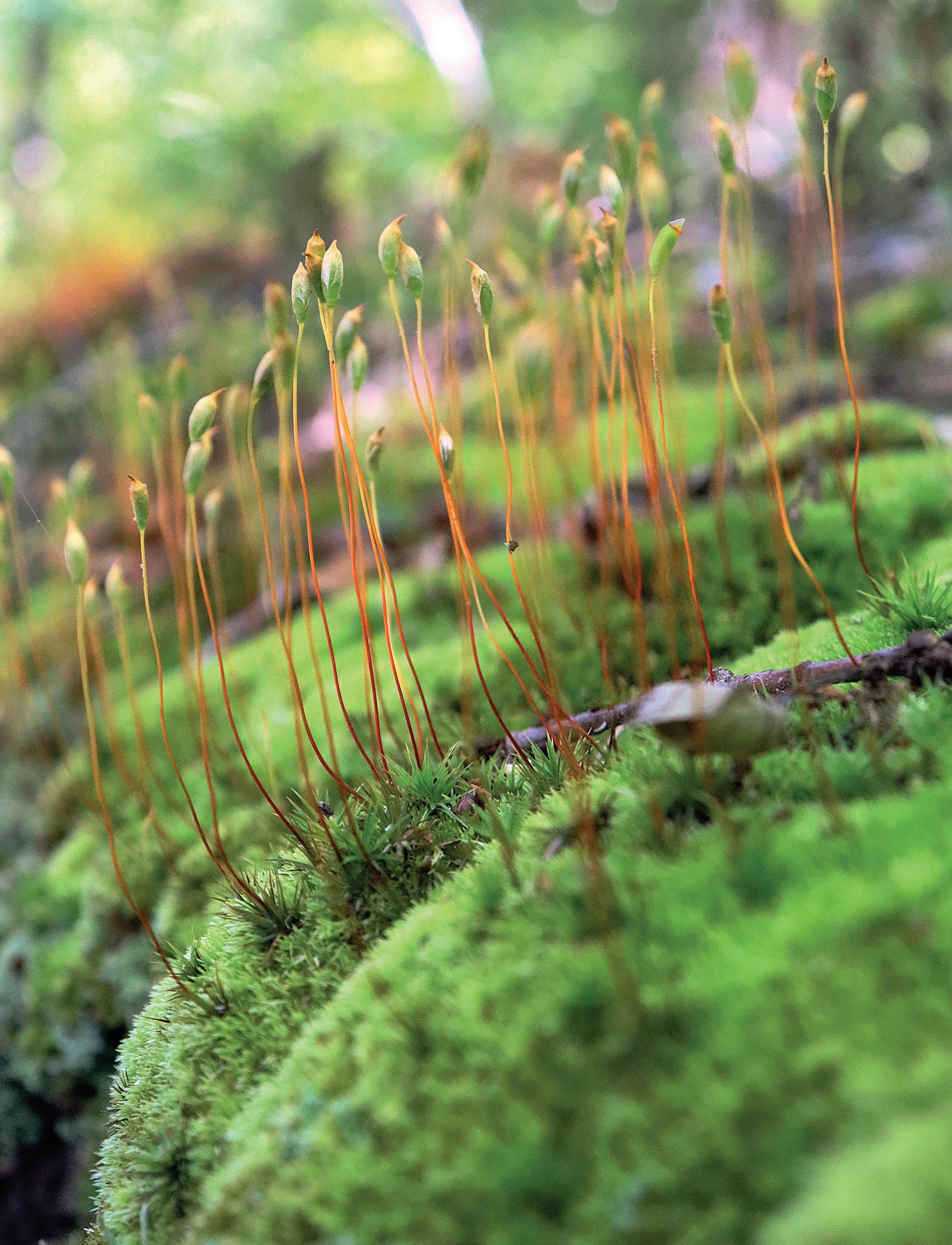
ARTICLE AND PHOTOS BY NICOLE ZEMA
Algae emerged from ancient oceans and became moss that colonized barren land 400 million years ago. Mosses are bryophytes that carpeted terrestrial landscapes long before other plant life evolved.
With hair-like rhizoid filaments instead of roots, mosses attach to surfaces, absorbing nutrients directly through surface tissues, unlike vascular plants. Spindly sporophytes produce spores within a capsule, eventually released and dispersed by wind and rain.
“I like mosses because they’re so ancient that they pre-date flowers,” said Samantha House, education specialist at Shenandoah River State Park. “It can grow on just about anything it can grab on to.”
Though tiny, the ecological role of moss is outsized—providing habitat for insects and other invertebrates, or nesting materials for some bird species. Bryophytes help stabilize soil, reduce erosion, and are natural sponges for water retention. Mosses also improve water infiltration for soil, supporting plant growth and overall ecosystem health. Though resilient enough to sequester carbon, moss can indicate the presence of pollution or contaminants.
To fully appreciate the diversity of Virginia mosses, go slow and get low.
Shenandoah’s emerald exhibition
Two “March Moss Madness” hikes took moss-spotters along the state park’s Cottonwood Trail around St. Patrick’s Day.
“What better way to celebrate St. Paddy’s Day than hiking to search for moss—nature's green carpet,” House said.
The park supports 208 species of moss and 58 species of liverwort. These nonvascular plants grow on soil, rocks and bark in a range of environmental conditions.
“Especially wherever there is moisture and shading,” House said. “Even in Arizona, I was surprised to see it growing right there in the sun, where water from a natural bridge fell into the creek.”
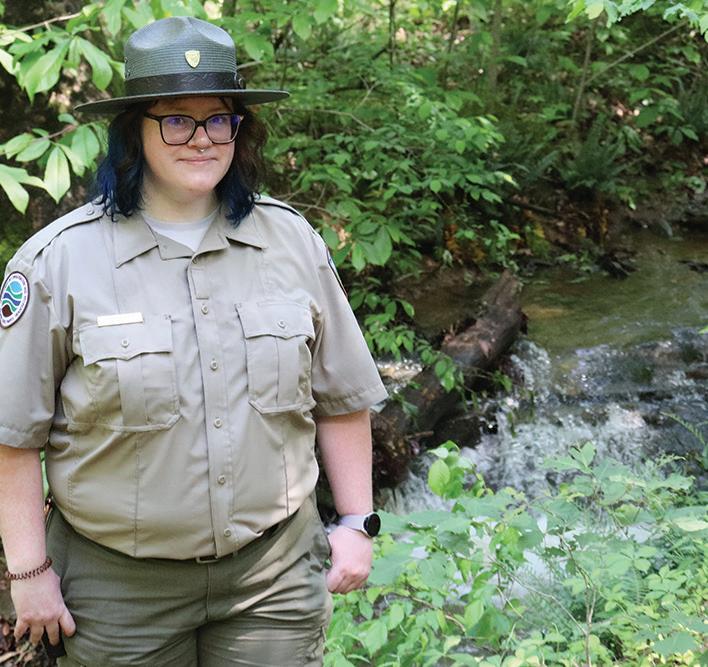
Her Moss Madness hikers stopped to admire species along the woodland trail.
Seductive entodon moss (Entodon seductrix) is versatile, thriving in both shade and sun, and looks like small wires with tapered leaves forming sharp points.
“You’ve got to love the name!” House joked.
The species is commonly used in green roofs, living walls and moss lawns.
Cultivating a backyard carpet
The botanical simplicity of moss ironically makes it hard to eliminate.
“So why work against Mother Nature?” mused Virginia Tech professor Mike Goatley, a turfgrass specialist with the School of Plant and Environmental Sciences. “If moss is already growing on your property, it indicates that environmental conditions are favorable for it.”
Elizabeth McCoy, a former Master Gardener with James City County Williamsburg Master Gardener Association, began encouraging moss as a groundcover in shady parts of her garden several years ago.
“I picked up small bits of moss and transplanted them to where I wanted more to grow,” she said.
Transplanted moss can be secured with a small stick or floral pins.
“Then you press or step on it firmly to ensure there is good adhesion between the bottom of the moss and the new surface,” McCoy said.
Some nurseries sell living moss.
“But most of us can easily collect small bits recovered from the spaces in a sidewalk or along a foundation to propagate larger areas of cultivated moss.”
Happy moss will tend to itself, McCoy said.
“Moss brings beauty and calm to our garden spaces,” she concluded. “It doesn’t need fertilizing or mowing to stay beautiful year after year.
Gardening with moss is gardening with nature in its purest form!”
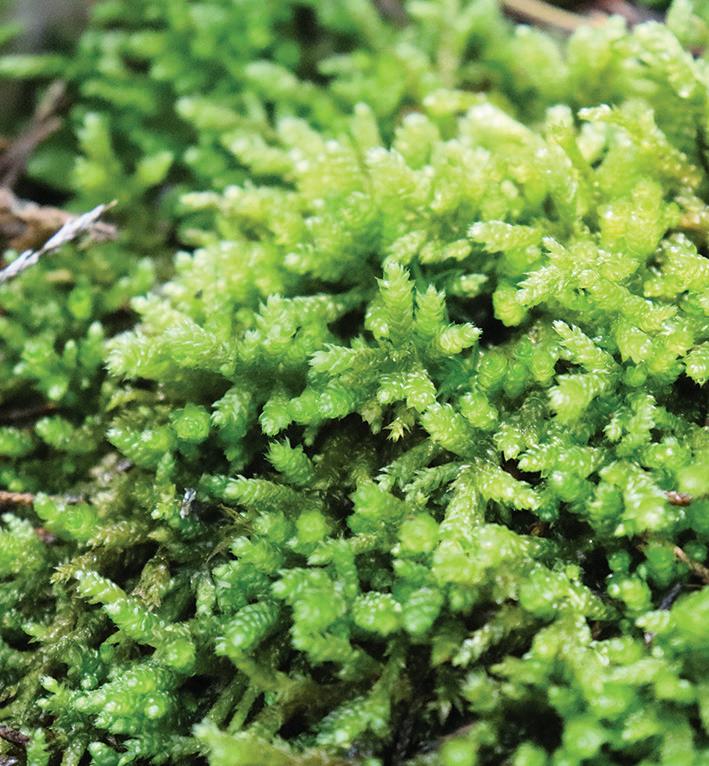
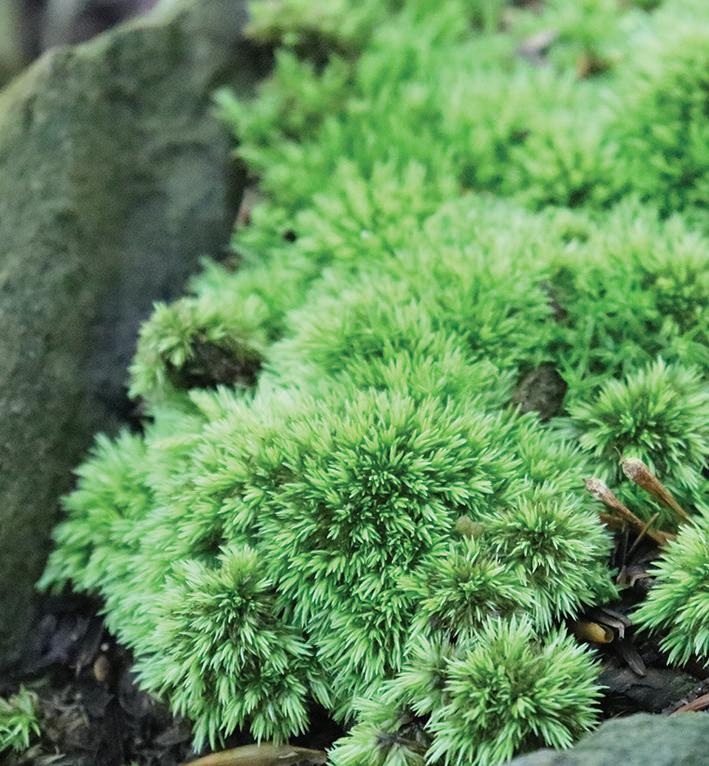

Spoon-leaved moss (Bryoandersonia illecebra) is abundant, with sprawling mats of worm-like leaves.
Pincushion moss (Leucobryum glaucum) forms cushion-like dome shapes in dense clusters.
Common fern moss (Thuidium delicatulum) boasts feathery fronds that form a carpet across grass or bare patches of ground.
Seductive entodon moss (Entodon sedutrix) sprouts sporophytes that produce spores within a capsule.
Rose moss (Rhodobryum ontariense) grows in clusters of toothy green flower-like shapes.

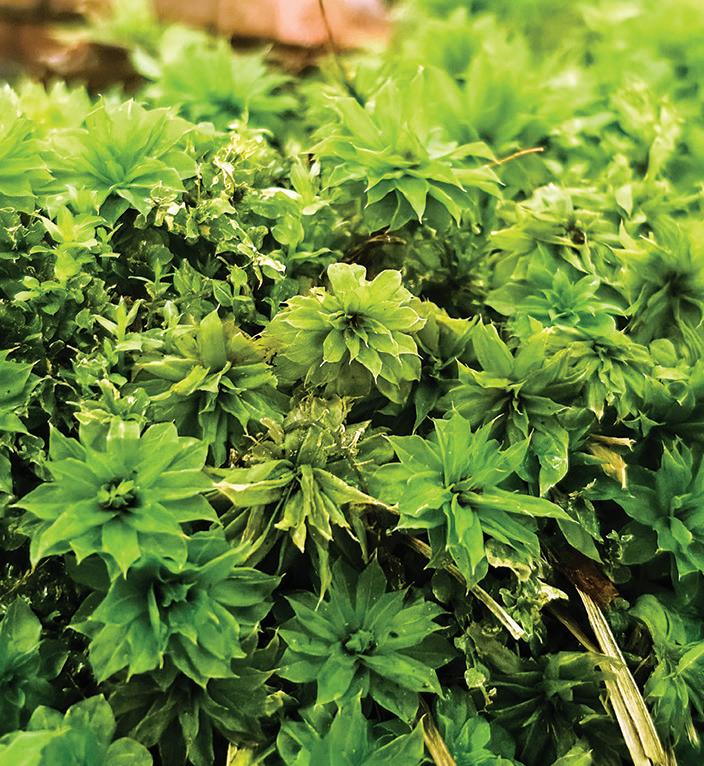
Become a moss boss in your garden
• Mosses should be watered with rainwater or distilled water.
• When establishing a new moss planting, mist it frequently.
• Remove unwanted vascular plants as they appear.
• Regularly blow yard debris away from mossy areas.
• Do not remove moss from public parks or private property.
• For successful transplanting, find a spot that matches the original environmental conditions.
• Be patient as it may take several growing seasons to get a lush carpet of moss.
• Consider stepping stones in the most trafficked areas of moss gardens.
— Tips compiled from JCCW Master Gardeners and Virginia Cooperative Extension
Future Moss Madness hikes are planned at Shenandoah River State Park.
Visit: dcr.virginia.gov/state-parks/events to see all upcoming events.
Or take a self-guided moss hike from the Massanutten Shelter parking lot at 350 Daughter of Stars Drive in Bentonville.
BY CHRISTINA AMANO DOLAN
Not all ecological wonders are as beloved as butterflies or bumble bees.
Some inspire awe and draw in admirers while others repulse and drive away picnic guests.
But even “unsightly” bugs have a mighty role to play.
Before despising the moth, fly, beetle, wasp or other creepy critter in your garden, consider their purpose. They may be pollinating your plants, devouring pests, breaking down organic matter or nourishing other essential wildlife.
“Insects are the primary drivers of our ecosystems,” noted Elaine Mills, Virginia Cooperative Extension Master Gardener and pollinator specialist. “If they aren’t here, we won’t be here.”
A flourishing future depends on these unsung heroes, but their existence is threatened by habitat loss, pesticide use and climate change.
That’s where the ultimate sidekick—the gardener—steps in.
While not as revered as their colorful cousins, moths are the powerhouse of the Lepidoptera family. There are around 400 species in Virginia compared to about 170 butterfly species.
Almost 75% of all flowering plants and one-third of all foods and beverages rely on moths and other essential pollinators, according to the nonprofit Pollinator Partnership.
Many species of nocturnal and day-flying moths pollinate by collecting pollen on their wings while feeding on flower nectar.
“But the caterpillar stage is the most critical for the foundation of the food web—96% of bird species rely on caterpillars to feed their young,” Mills said.
Flies are the second-most efficient pollinators behind native bees. While the adults transfer pollen from foraging, the larvae feed on aphids in the garden.
Beetles were the first pollinators and they keep alive Mesozoic-era species like magnolias and spicebush. These flightless bugs aren’t the most efficient pollinators, but some species—like ladybugs and ground beetles—have a productive appetite for pest insects.

Don’t hate these vital helpers

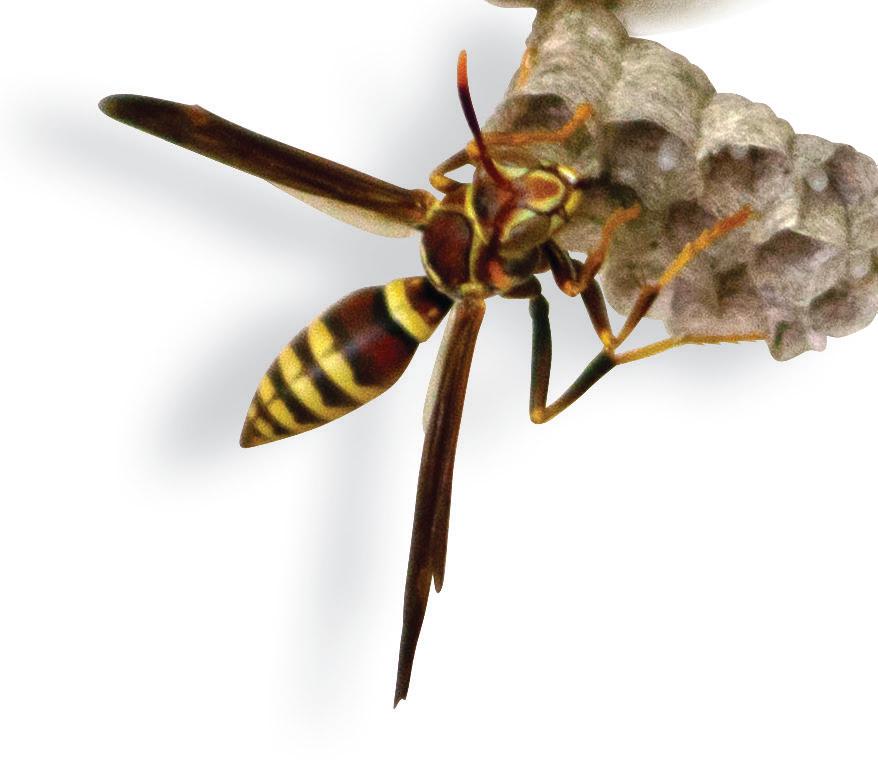
“If they aren’t here, we won’t be here.”
— Elaine Mills

Wasps are the evolutionary ancestors of bees and help pollinate when visiting flowers for nectar. Many are solitary and non-aggressive, but they all have benefits—helping control pests like the tobacco hornworm.
The larvae of yellow jackets serve as prey for various birds and mammals.
Other unsung heroes like true bugs, lacewings, centipedes and millipedes help break down organic matter in gardens.
To help moths in the garden, Mills recommends incorporating a variety of native plants with ideally 70% biomass to best support caterpillars.
Oak trees act as host plants for over 500 species of caterpillars. You may find tiny caterpillar bites when closely examining the leaves.
“We want to see them being eaten to a certain extent—it’s something to celebrate!” she exclaimed.
Caterpillars also will benefit from asters, birches, blueberry shrubs, cherry trees, goldenrods, poplars, sunflowers and willow trees.
For nourishing nocturnal moths, select pale or white, night-scented and tubular flowers like garden phlox, evening primrose and common yucca.
Support flies by growing red trillium, wild ginger, pawpaw or other plants with dark brown, purple or pale flowers.
Beetles prefer open flowers with white, cream or green coloring and a spicy, fruity or fetid fragrance—like sweet bay magnolia, Carolina allspice and Jack-in-the-pulpit.
Attract beneficial wasps with white or yellow flowers. Common boneset, Virgin’s Bower and rattlesnake master are especially appealing.
Top row, left to right: Eastern Calligrapher fly on sedum (photo by Mary Free), wasp on hibiscus and webworm moth on passionflower (photos by Elaine Mills). Middle row, left to right: Banded syrphid fly pollinates a purple coneflower (photo by Mary Free), a lady beetle eats aphids on a cup plant and a ladybug rests on a pussytoe plant (photos by Elaine Mills). Bottom row, left to right: Syrphid flies feast on a dandelion (photo by Christina Amano Dolan), a potter wasp sips nectar from fireweed (photo by Mary Free) and a mason wasp pollinates a Virgin's Bower vine (photo by Elaine Mills).

Mills offers general tips for supporting beneficial insects: Avoid planting invasive species.



Cultivate plants that offer nectar and pollen and can serve as hosts; and herbaceous and woody plants with different flower types that bloom from early spring through fall.


Provide a sunny spot for pollinators to warm their flight muscles.




Grow at least one supportive plant species in a cluster to attract flying pollinators.

Retain leaf litter for overwintering larvae.
• Leave dead trees or fallen logs on your property for cavity nesters.
• Create “puddling areas” for butterflies with shallow sources of water in containers.
• Buy untreated plants from a reputable nursery, and avoid using pesticides.
For more information, Mills recommends visiting homegrownnationalpark.org and pollinatorsnativeplants.com Watch Mills’ recorded webinar on “Partnering with Pollinators” at mgnv.org
A yellow jacket may crash your picnic in the late summer and early fall—when populations peak and food is scarce. They have an appetite for sodas, juices, candy, desserts, meats, fruit and vegetables.
For a safe picnic experience, Clemson University Cooperative Extension recommends:
• Frequent removal of garbage around picnic sites, and tightly fitted garbage can lids.
• Cover food and beverages until served.
• Carefully check open soda containers prior to consumption.
• If highly sensitive to venom, carry a sting treatment kit when outdoors.
Pollinator Partnership warns against swatting or squashing a yellow jacket, which can attract others. Instead, slowly move away and remove or cover whatever is attracting it. Do not disturb nests unless they pose an immediate threat. Unsung garden heroes



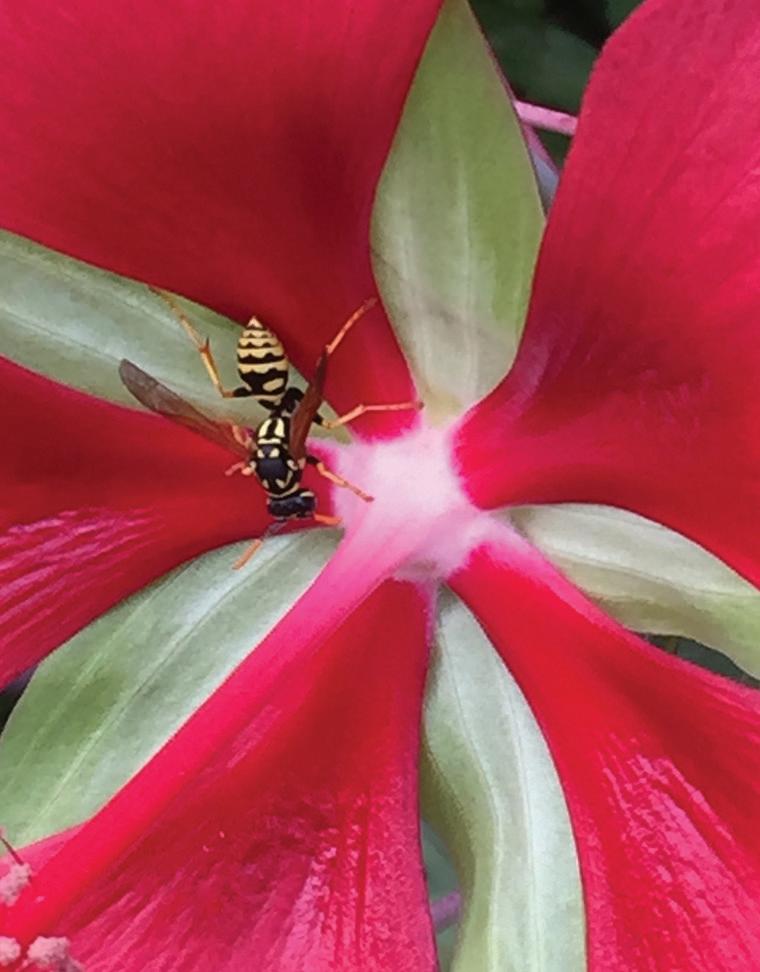
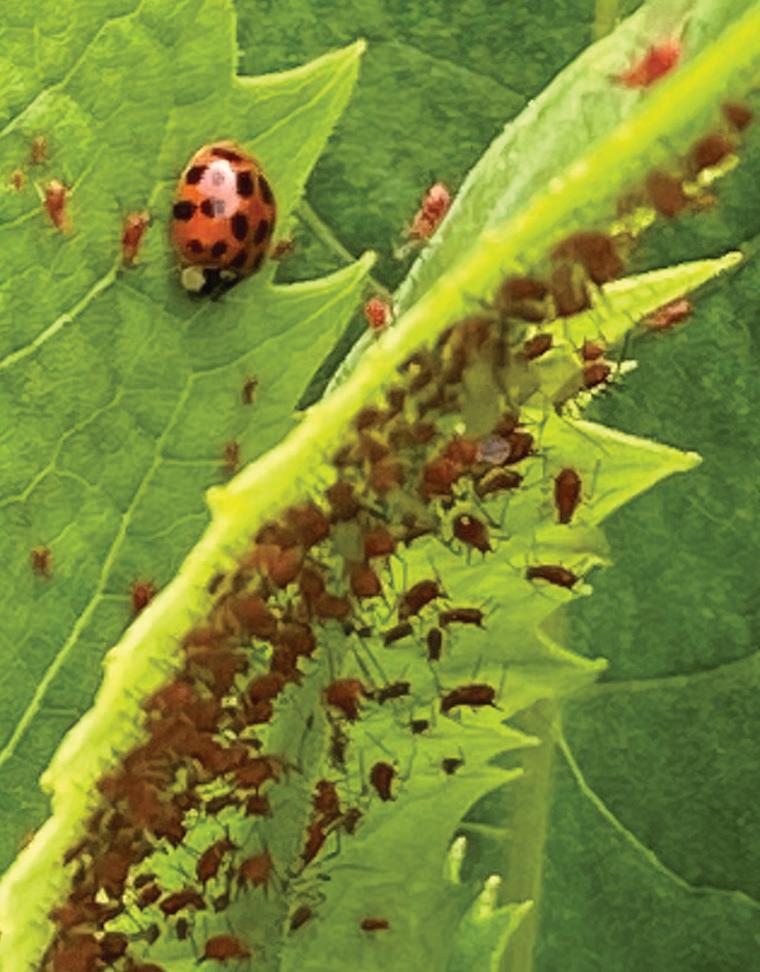
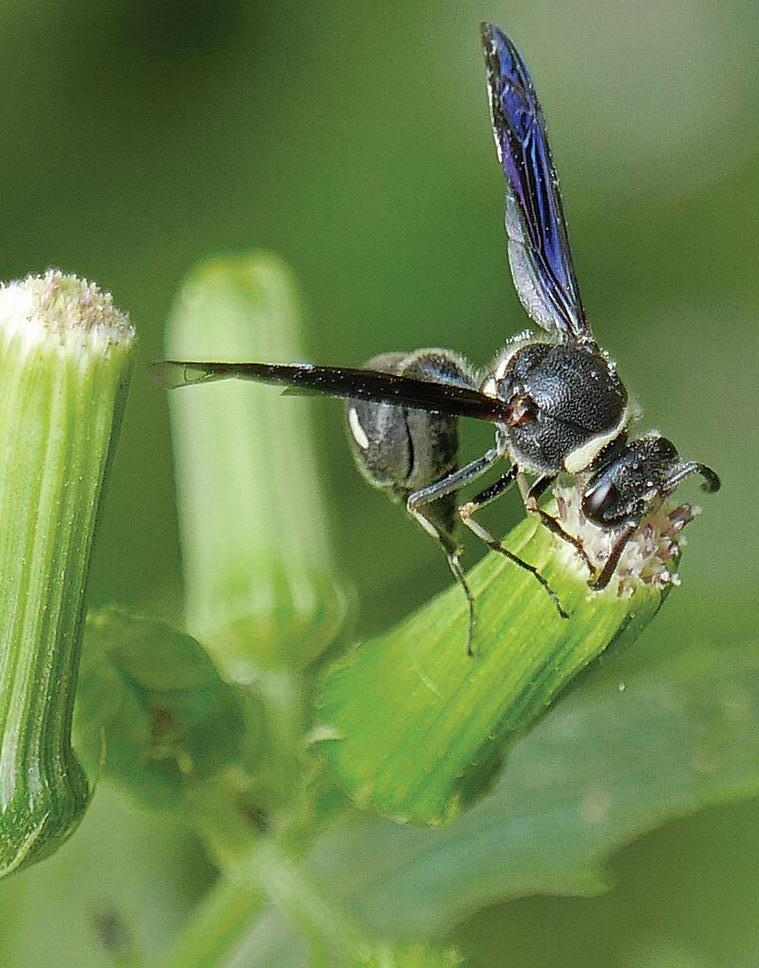
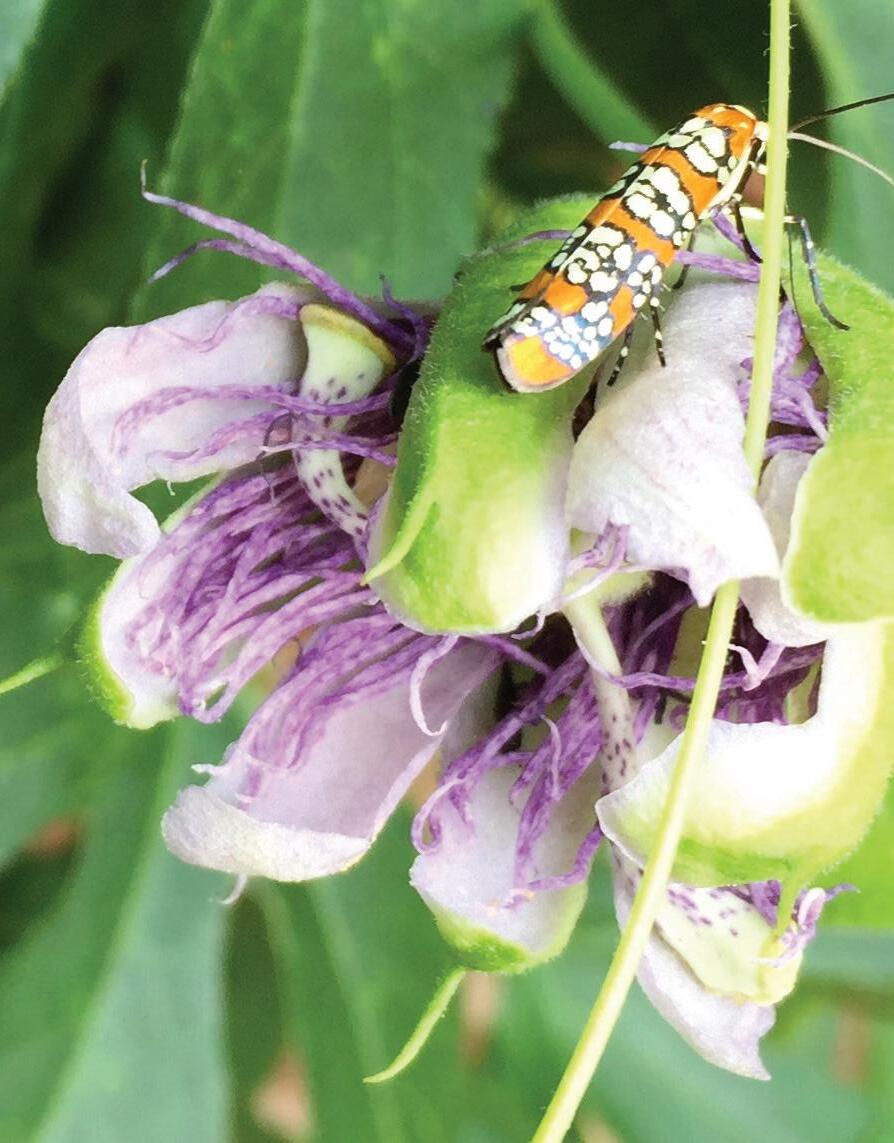
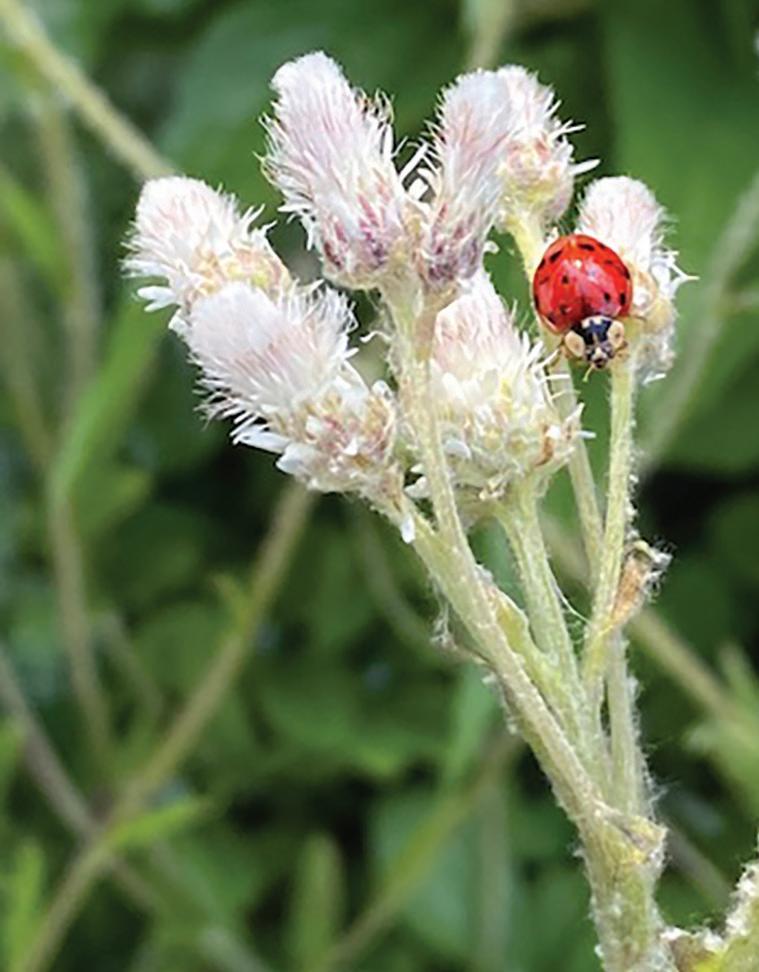




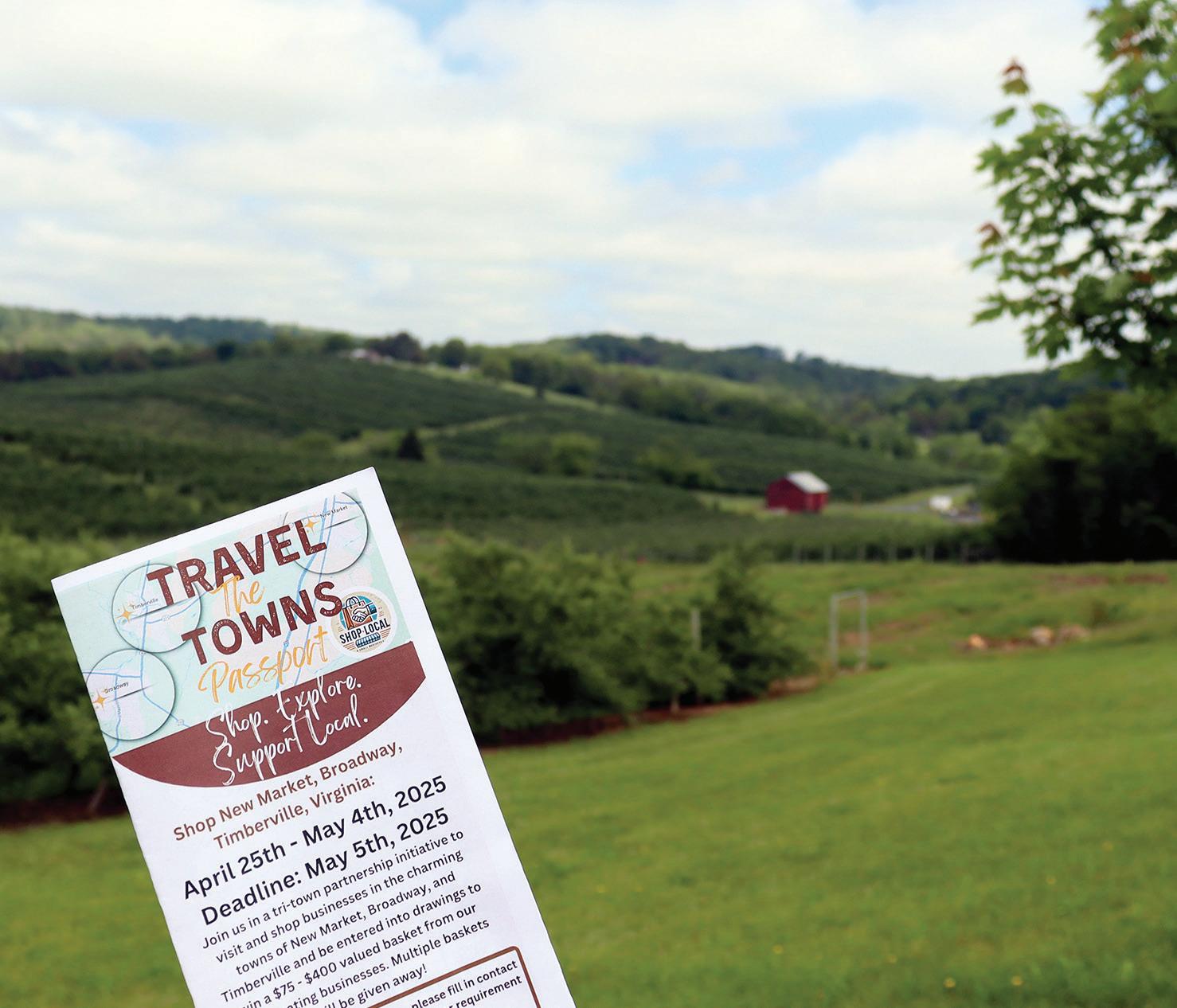






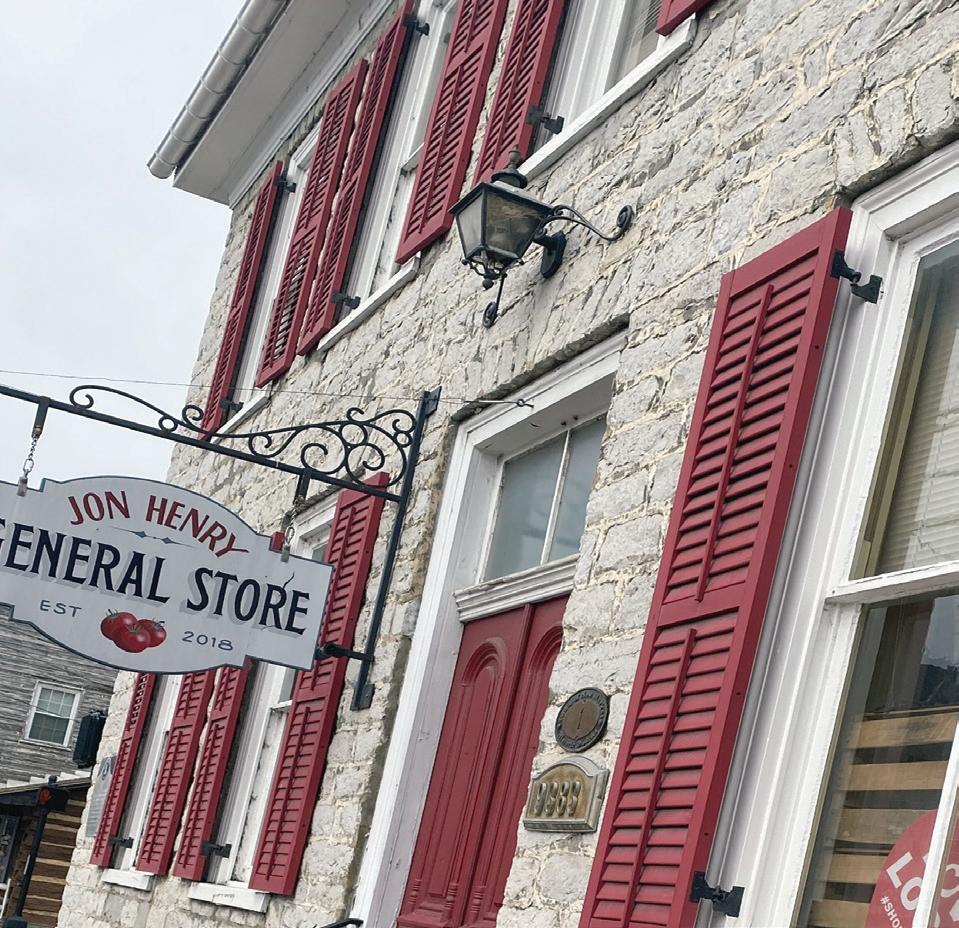

ARTICLE AND PHOTOS BY NICOLE ZEMA
Perhaps the road less traveled is one you drive past on a regular basis.
Several Virginia locales and organizations have partnered with area businesses and attractions to collaborate on passport programs that encourage regional exploration. Among the passport sites are agribusinesses, agritourism operations and farmscapes attracting both tourists and locals.
While the pursuit of a passport stamp and prizes may draw visitors in, the ensuing adventures often bring them back for more.
On a busy spring Saturday at Richard’s Fruit Market in Frederick County, Kayla Lawrence stamped passports while simultaneously running the cash register, taking orders for peach milkshakes and directing families to the barnyard playground out back.
In 2024, Lawrence and her cohorts on the Frederick County Farm Bureau Women’s Leadership Committee introduced The Farm Explorer of Frederick County Passport program, enticing families to explore the area’s 10 farm markets. The free passport books, available at the markets or at the Winchester-Frederick County Convention & Visitors Bureau, are stamped on pages listing each market location from April through December.
“The passport lets the community know that all these farm markets are here!” Lawrence said. “Our goal is for folks to support local farm businesses, get to know their community, and learn where food comes from.”
About 5,000 passports for adults and 4,000 for children were distributed in its first season. Lawrence estimated 200 participants redeemed their fully stamped passport books for prizes like hats, canning jars and seed packets at the visitor center.
“We’re anticipating handing out more passports this year,” she said. “People are absolutely excited to do it again!”
Woodbine Farm Market co-owner Susie Whitacre said they heard early requests for the 2025 passports before the season officially kicked off.
“It’s not only bringing people in here,” she said. “People are visiting the other farm markets, which is good for all of us in each niche.”
Locations like Marker-Miller Orchards & Farm Market shares similarities with Richard’s Fruit Market’s niche, Lawrence said.
“But West Oaks Farm & Market is a whole different style. It’s like a grocery store! It’s big, and more of a venue with its own restaurant.”
RJ Miller, West Oaks kitchen manager, said the passport is especially popular among families with young children.
“They like hitting our playground of course,” he said. “And they usually get a bite to eat when they’re here!”
Grandparents keeping grandchildren on weekends make the rounds too, Lawrence said.
“They’ll choose one farm market per weekend and visit for their stamp,” she said. “It also gives stay-at-home parents a chance to get kids out and explore. Homeschoolers use it as an educational opportunity. Even teenagers get excited about it. It has value for anybody.”
Sponsors of the passport program
include Frederick County Farm Bureau, Discover Winchester, Shenandoah Apple Blossom Festival and the Virginia Tourism Corporation.
Travel the Towns PassportBroadway, New Market & Timberville
Broadway, New Market and Timberville are three dots on a map connected by a straight line, noted Savannah Frazier, Town of New Market events and marketing director.
“Though we’re not in the same county, we’re all a few minutes away from each other,” she said. “We saw an opportunity to collaborate, benefitting our collective businesses and encouraging residents to explore—getting to know the various towns right around the corner.”
The newly formed partnership introduced a Travel the Towns Passport program this spring with 54 total stops, spanning locations from main street to the countryside, including multiple agribusinesses.
“All three towns are rural, so it makes sense that a portion of our businesses are ag-related!” Frazier said.
Glenhaven Greenhouses is one of 25 businesses on Broadway’s passport page, offering a staggering inventory of ornamental plants and vegetable seedlings. Owner Arlene Reid said she met many first-time visitors seeking passport stickers.
“The enthusiasm was great, and it’s been a positive thing for the community,” she said. “Our neighbors didn’t seem to realize there were so many businesses in the Broadway area!”
Visitors to Showalter’s Orchard can enjoy a cider tasting with a view of the apple trees while collecting their



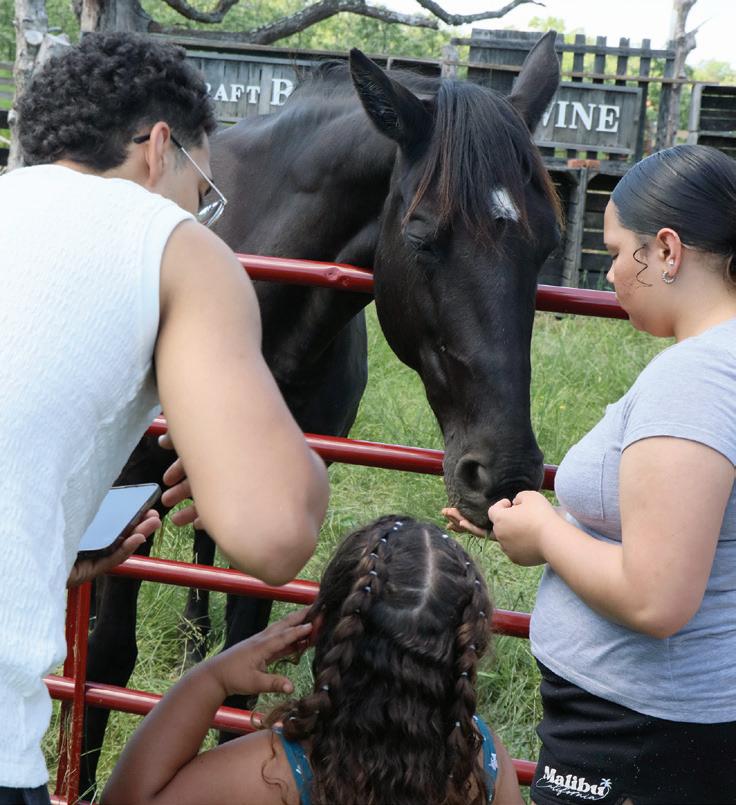

Timberville passport stamps, and pose for a selfie overlooking the Shenandoah Valley. At Jon Henry’s General Store in New Market, locally sourced meats, vegetables and plants are among the array of items that satifsy stamp seekers.
“We had 30 passports completed and one individual who visited all 54 places,” Frazier reported. “They had dedication for sure! The prizes were just a little bit of incentive to get people to explore a little more.”
About $2,000 worth of prizes packed into 19 gift baskets were donated or supplied by business partners. The three-town partnership hopes to add more stops to the Travel the Towns Passport, returning next year with an extended timeline.
Foodies, hikers, history buffs and inspiration chasers can access virtually endless surprises among 11 interconnected cities and towns throughout Coastal Virginia. They only need a mobile device and sense of adventure.
Visitors seeking rural experiences will find them represented among a host of check-in locations on four Coastal Virginia passes
“We’re a region without visible borders to the traveler,” explained Sarah Hughes, vice president of marketing and communications for Visit Norfolk.
“Whether it’s savoring local seafood, diving into rich history, exploring vibrant arts scenes, or enjoying water views and outdoor adventures, everything is within an hour’s reach—making it the perfect destination to explore through a passport-style journey.”
Hundreds participated in the program last year. Passes are received via text or email instead of an app, supplying mobile coupons as GPS technology automatically checks users in at each location. This season’s pass expires March 1, 2026. Qualifying passports can be redeemed for prizes at regional visitor centers.
Agriculture, forestry and maritime heritage are woven into the tapestry of








The Atlantic Wildfowl Heritage Museum exhibits the art of decoy carving using primitive tools, alongside more elaborate and expressive contemporary carvings. The Chincoteague Oyster Festival, held this year Nov. 7 and 8, celebrates Chincoteague “salts” and the beginning of oyster season. The Eastern Shore Maritime Museum collects, archives and celebrates the heritage of the watermen of Virginia’s Eastern Shore.
The Emancipation Oak, site of the first public Southern reading of the Emancipation Proclamation, is designated as one of the 10 Great Trees of the World by the National Geographic Society.
“The passports were designed for those who crave immersive, gamified experiences that reward exploration,” Hughes said.
CoVa’s Happy Trails Pass will take travelers to Bluebird Gap Farm’s 60-acres housing 150 domestic and wild animals. Two equestrian centers offer full-service riding lessons or therapeutic equine activities. The Williamsburg Farmers Market is a Virginia producer-only market offering a variety of farm-fresh or handmade local products.
Other ag-adjacent sites are listed on the CoVa’s Eclectic Eats Pass and History Buff Pass.

Farm Explorer Passport
Follow the Frederick County Farm Bureau Women’s Committee on Facebook for updates.
Travel the Towns Passport Visit bit.ly/travelthetowns or follow the Broadway, New Market and Timberville town Facebook pages.
Coastal Virginia Passes
Go to visitcova.com/passports, or #visitcoastalva on Instagram and #Coastal Virginia on Facebook.
ARTICLE AND PHOTOS BY ALICE KEMP
Wiggling beneath the ground, they’re not the most glamorous members of the garden, but they’re one of the most essential.
“Worms can do many things for the soil,” said Derrick Gooden, Virginia State University Small Farm Outreach Program’s Eastern Virginia regional assistant, during a workshop about worm castings, or vermicomposting. “They help with decomposition, nutrient cycling, soil aeration, carbon regulation and
worm castings help retain moisture while preventing nutrient loss, and contain macronutrients central to plant development like nitrogen, phosphorus and potassium.
Cultivating castings
For Anita and Thomas Roberson of Botanical Bites & Provisions in Spotsylvania, producing worm castings is an economical and sustainable choice.
Not just enriching their small farm’s soil, Anita sees them as a method for reducing waste and repurposing
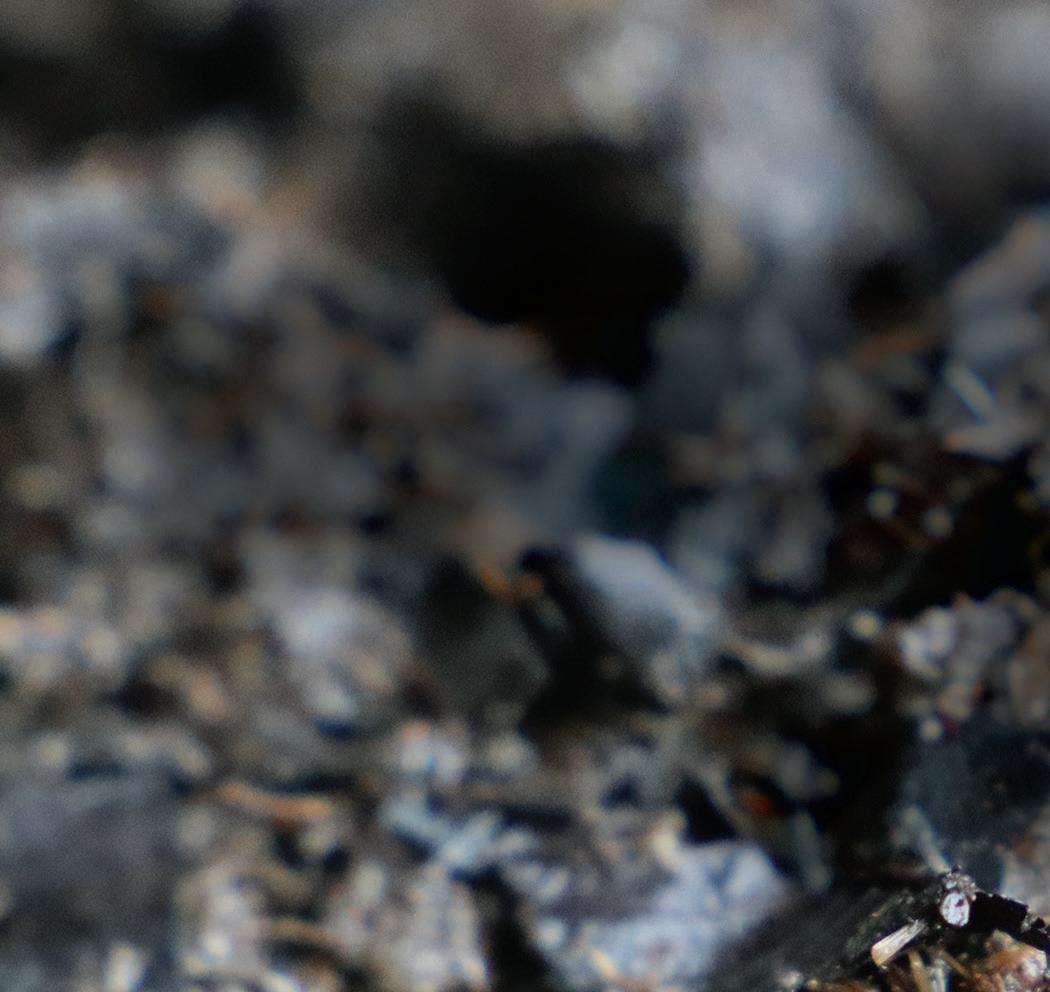
She overloaded the bin with food, which caused excess moisture to build up. Because worms breathe through their skin, the soggy conditions sent them looking for an escape. Now Anita only feeds her worms once a week after previous scraps have broken down—ensuring conditions stay damp, but not wet.
“Worms are vegetarians,” she explained, and prefer produce scraps, cardboard, chopped leaves and grass clippings. They also have
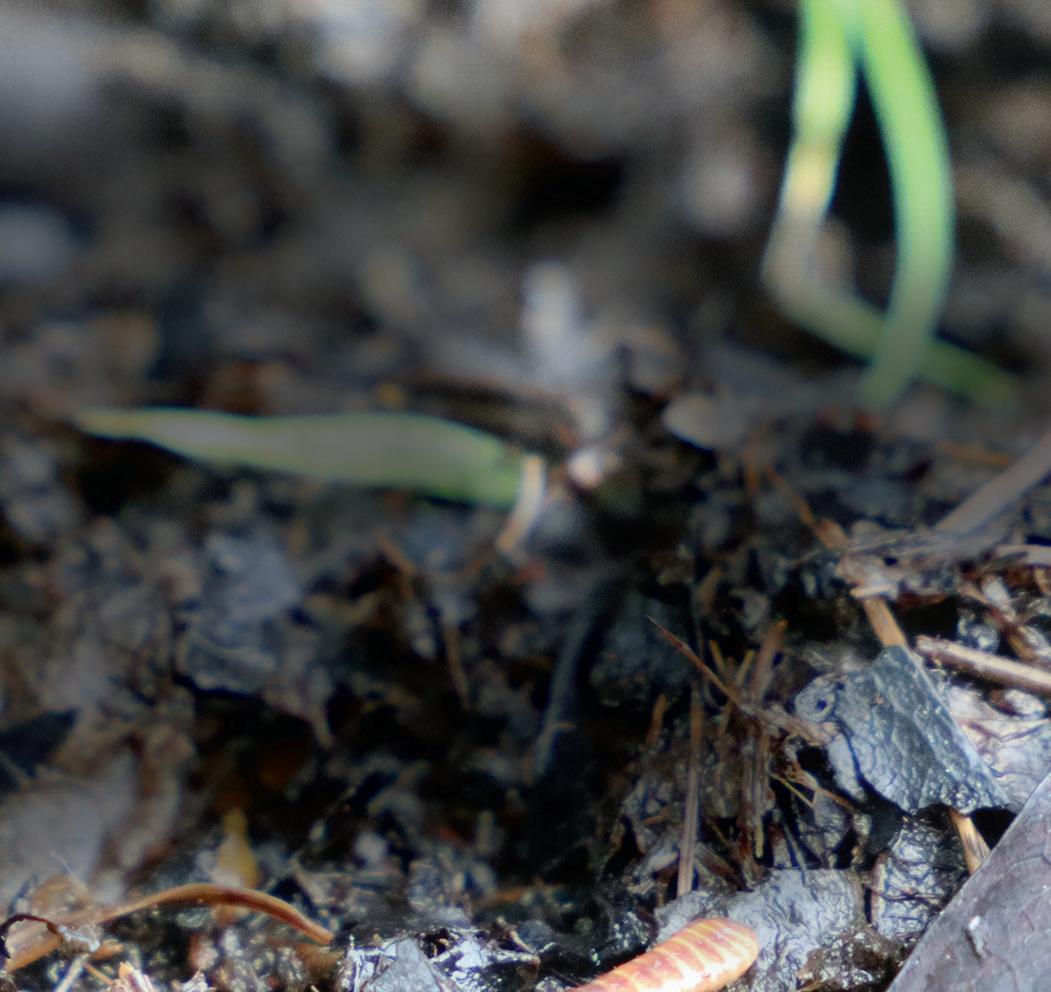
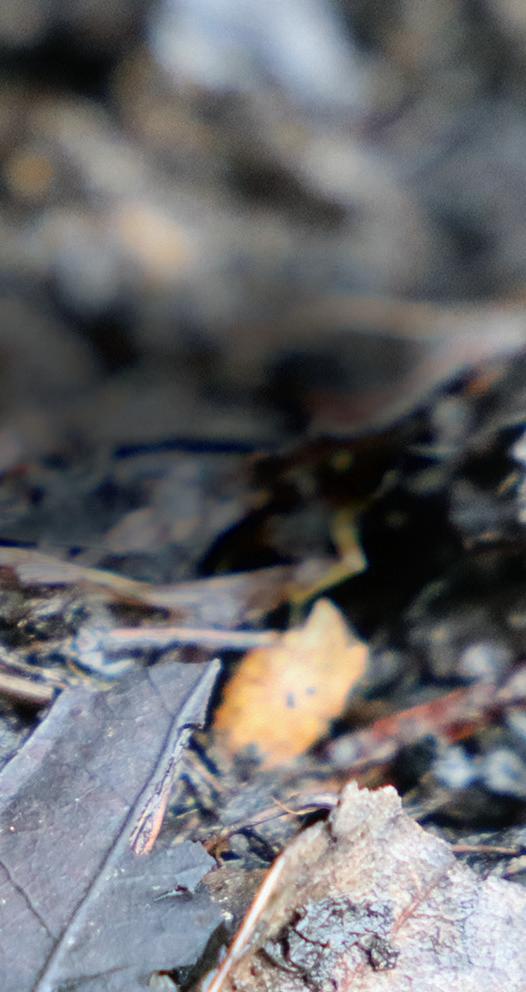
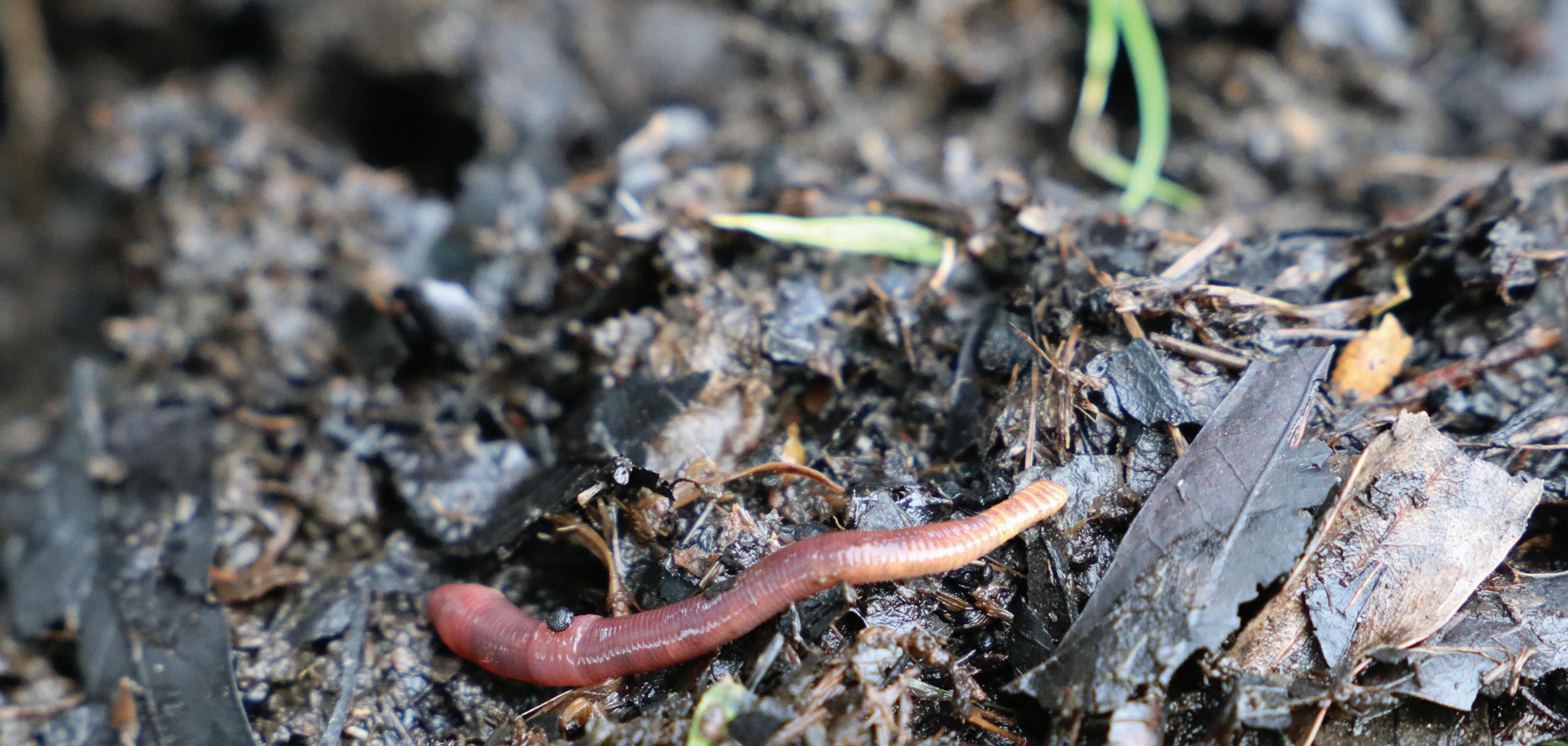
improve water flow and soil structure.”
Worms are “essentially one long stomach,” Gooden said, and their unique gut bacteria lets them digest all kinds of organic material, transforming it into nutrient-rich worm poop, otherwise known as worm castings. The clean, earthy, natural byproduct is “packed full of beneficial microbiology” and prized by farmers and gardeners to boost plant production and soil fertility. A foundation of healthy soil,
produce scraps and yard cuttings.
Food and yard debris account for nearly 30% of material in landfills and happen to be worms’ favorite foods.
But there was a learning curve.
“I got my first worm bin for Christmas a few years ago and set it up without doing my homework,” Anita recalled. “I came downstairs one morning and the worms had escaped. Hundreds of worms were wiggling all over the family room floor. It was a mess.”
gizzards like chickens, so she adds finely crushed eggshells, sand or coffee grounds as grit. Meat, dairy, citrus, spicy veggies, garlic, onions and anything oily are off the menu.
Worms reproduce quickly and today the two large storage tubs in her basement house around 10,000 happy red wigglers. She mixes 2 tablespoons of worm castings per gallon of water to create a nutrientrich “tea” that fertilizes her crops
through the farm’s irrigation system.
“There are studies showing that produce grown with worm castings developed more disease resistance and resilience than those left on their own,” she said. “My plants are healthy and strong, my production is awesome, and it keeps waste out of landfills.”
Some might want the benefits of worm castings without raising them. That’s where producers like Debbi and GB Little of Turkey Island Growers and Worm Farm in Henrico come in.
GB became interested in worm castings three years ago after learning how some farms and vineyards used them to naturally boost crops. Inspired, he and Debbi decided to experiment.
“We were having all kinds of issues with our tomatoes,” Debbi said. “We thought this might be the answer.”
After using worm castings, their tomatoes started doing “10 times better.”
Seeing a potential market opportunity and side-hustle, they ramped up production and embarked on their vermicast venture. Today, they manage several worm pots and windrows filled with countless red wigglers. During peak season, a single 200-gallon pot of worms will churn out 80 to 150 gallons
of castings in roughly two months.
“The worms will eat about 100 pounds of material in two or three days during this time of year,” GB said. “They’re voracious.”
And thanks to their hardiness and the area’s relatively mild winters, production runs year-round.
“It might be 11 degrees outside, but within the soil where the worms are, it’ll still be 50,” GB said. “Though they slow down a little.”
The “mom and pop operation” prefers a hands-on process. When there’s enough to harvest, worms are scooped out and castings are screened to remove leftover debris. They’re kept cool, moist and shaded—preserving the valuable microbials for customers.
Selling through Facebook, local farmers markets, garden shows and websites like the Virginia Association of Biological Farming, their buyers range from home gardeners picking up a 5-gallon bucket of castings to small farms. With plans to increase marketing and production after GB retires, the couple hopes to reach more growers and continue spreading awareness about worm castings’ benefits.
“There’s a lot of interest in it,” Debbi said. “We recently had a farmer come purchase 4 cubic yards—half our inventory!”

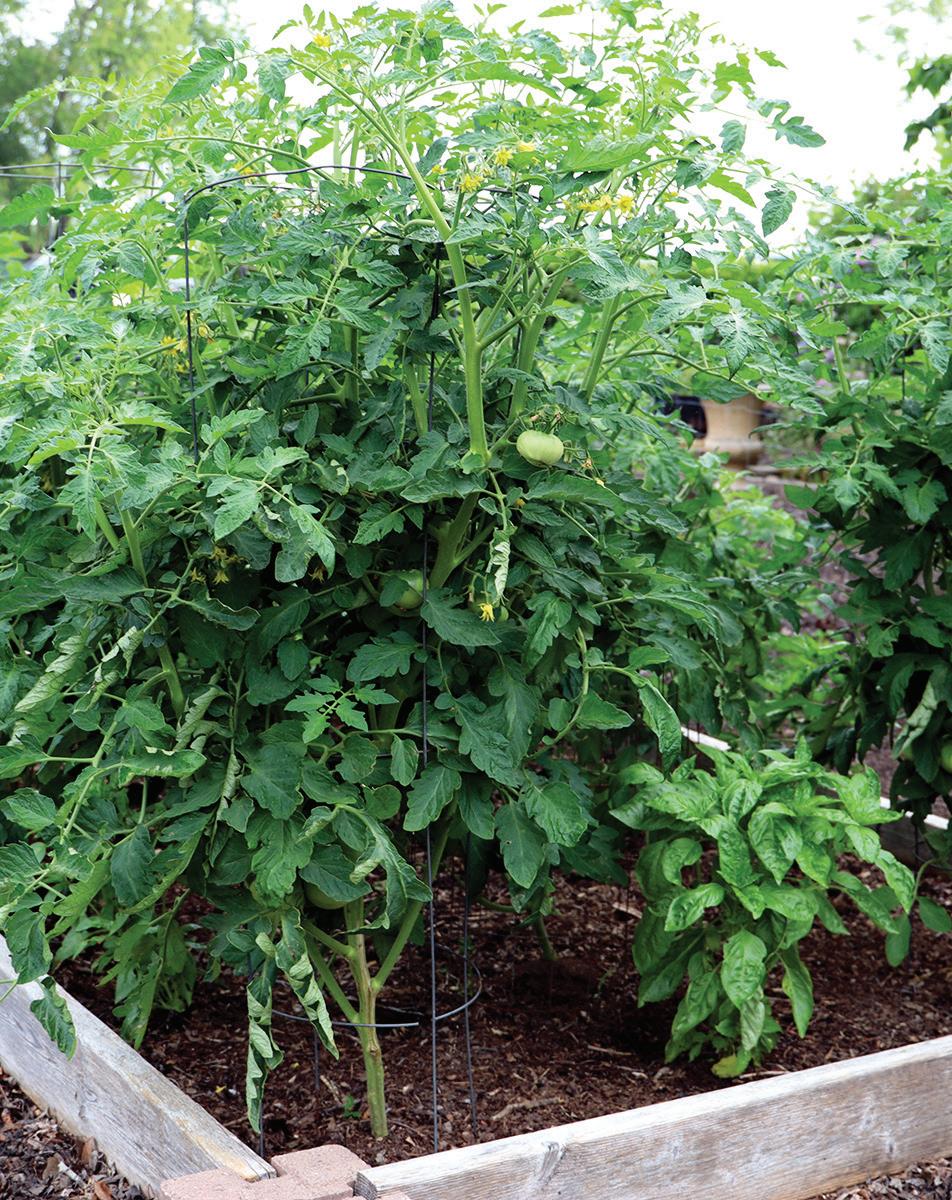
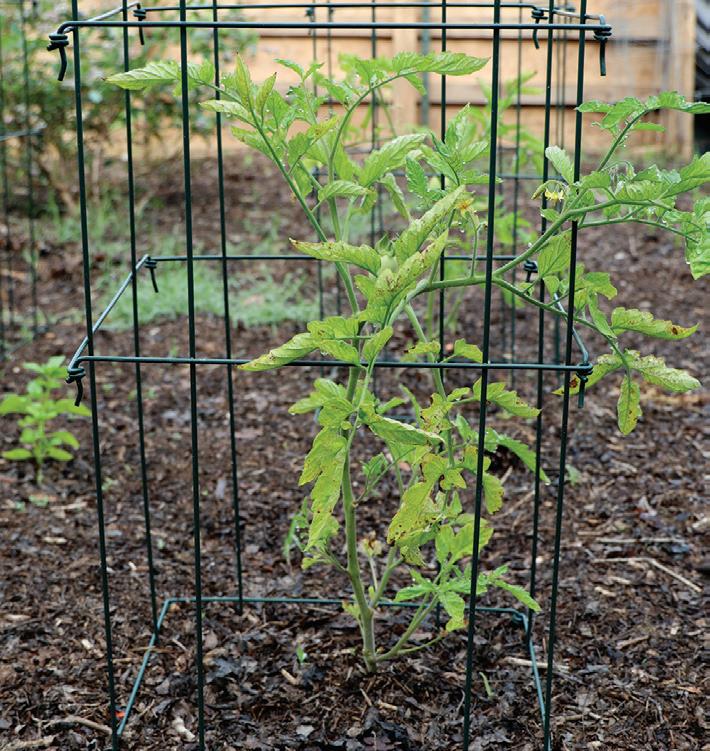
You don’t need many worm castings to benefit the soil but even if you add too much, there’s no harm done. Unlike traditional compost or manure, the pH neutral “black gold” won’t harm plants in large amounts.


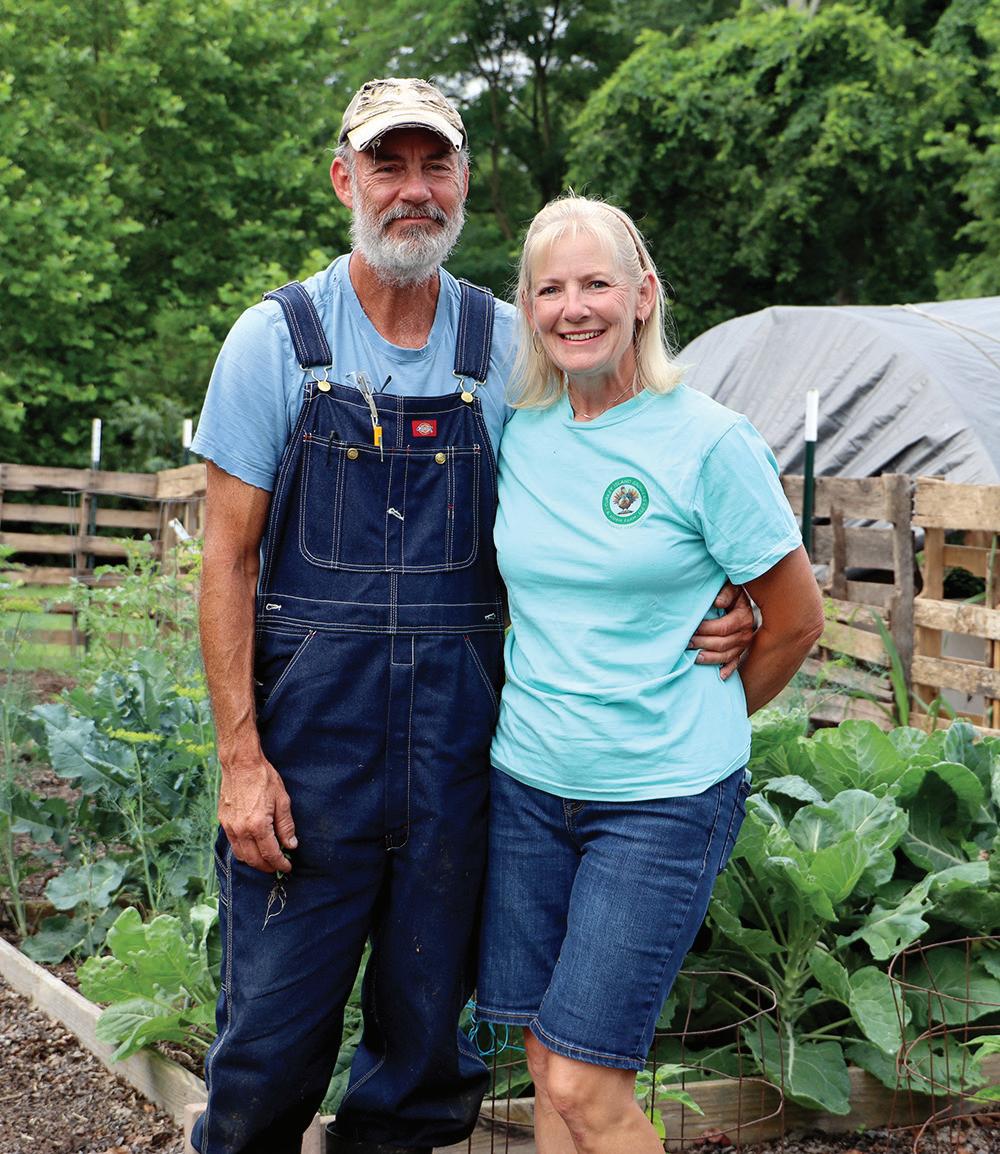
“All composting worms are earthworms, but not all earthworms are composting worms,” Gooden noted. All kinds of worms play important roles in ecosystems, but some stand out for their vermicomposting abilities.
“Red wigglers are the best overall,” Gooden said. Eating 75% of their body weight, they tolerate temperatures ranging from 35 to 90 degrees. Preferring crowded quarters, they’re adaptable and efficient for both small home and commercial operations.
African nightcrawlers are the performance athletes of the worm world. Consuming 150% of their body weight, they produce castings up to three times faster. Gooden calls them “the professional’s worm” as they’re sensitive and require a stable 70- to 85-degree setting.
“You have to have your environment dialed in,” he said.
To learn more about the vermicomposting process, materials and getting started, visit bit.ly/4kQJUFN
Gooden and Roberson also recommend researching vermicomposting online, watching informational YouTube videos or checking out books.
When sourcing worms, be sure you’re purchasing worms suitable for composting. Avoid invasives like jumping worms, often sold as fishing bait, as they can harm ecosystems by depleting valuable nutrients from the soil.





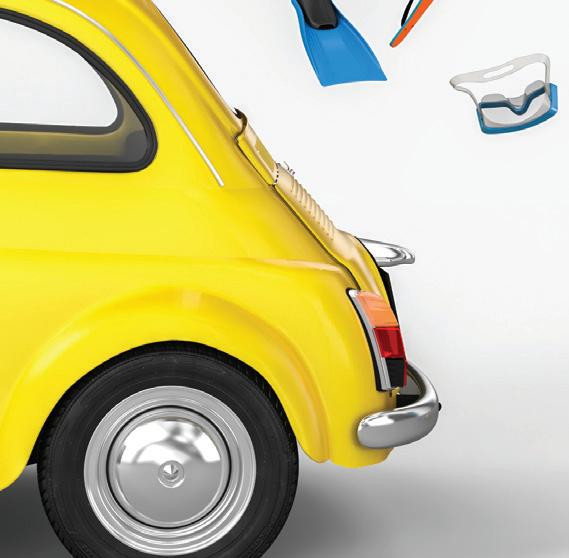




BY KATHY DIXON
Af lying mattress, a bouncing lawn mower engine and two 500-plus-pound hay bales were responsible for highway deaths and serious injuries.
In all three cases, the drivers were at fault for failing to secure their loads.
“You must properly tie down a load,” noted Virginia Farm Bureau Mutual Insurance Co. claims attorney Jay Brown. “How you do it is somewhat subject to interpretation, but if it comes off, you are responsible.”
For many Virginians, vehicles often are used to transport everything from home improvement supplies and yard waste to furniture and recreational gear.
But what happens if that seemingly innocuous stack of lumber or that prized leather sofa decides to make a break for it on Interstate 81? The consequences of an unsecured load can lead to serious accidents, injuries, significant financial liabilities and even death.
In the case of the round bales, 14 of them were secured with just one strap. “That’s just not sufficient,” said John Agee, VFBMIC director of casualty claims.
The driver hit a pothole, two of the bales fell off his trailer and hit two motorcyclists—seriously injuring one of them.
Whose responsibility is it anyway?
The driver of the vehicle is ultimately responsible for ensuring their load is properly secured. This isn’t just a suggestion; it’s a legal mandate. Virginia Code says that “No vehicle shall be operated or moved on any highway unless
it is constructed or loaded as to prevent any of its load from dropping, sifting, leaking or otherwise escaping.”
It also says that “any person operating a vehicle from which any glass or objects have fallen or escaped which could constitute an obstruction or damage a vehicle or otherwise endanger travel upon a public highway shall immediately cause the highway to be cleaned of all glass or objects and shall pay any costs therefore. Violation of this section shall constitute a Class 1 misdemeanor.”
This responsibility extends beyond tie-downs and tarps. It also encompasses proper weight distribution and ensuring a load doesn’t exceed a vehicle’s capacity. While commercial truck drivers operate under additional federal regulations, the core principle applies to every driver.
Even if someone else helped you load your vehicle, the driver is still the one held accountable if something falls off. It’s imperative to do a final inspection before hitting the road, and to periodically check your load during your trip.
VFBMIC casualty claims manager Darryl Sarver suggested that after you secure your load, “secure it more. You don’t want to be responsible for someone losing a life.”
An unsecured load isn’t just an inconvenience; it’s a serious road hazard. Items falling from a vehicle can lead to other drivers swerving to avoid falling debris, potentially causing multi-vehicle collisions.
If debris strikes another vehicle, it can cause damage to windshields and bodywork. Even if the falling load doesn’t hit
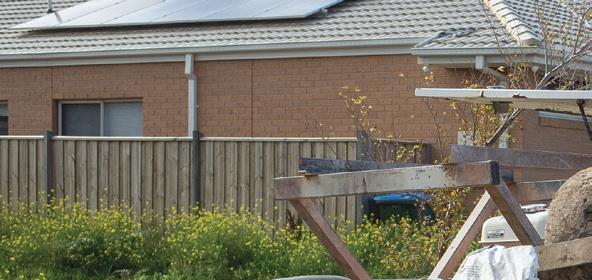

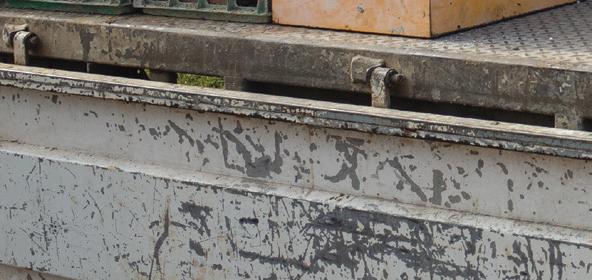
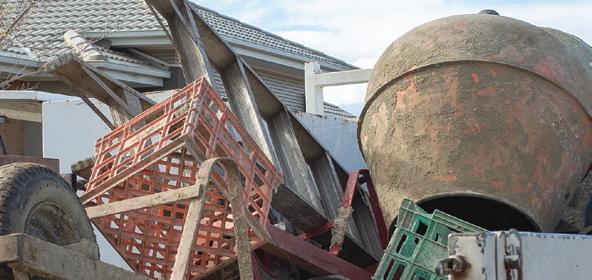
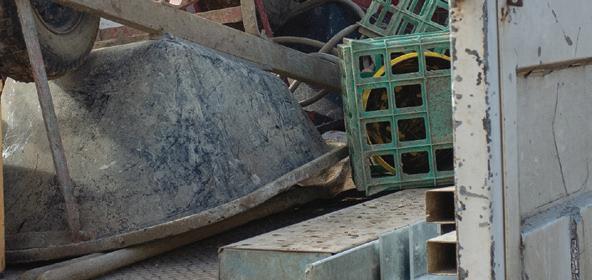
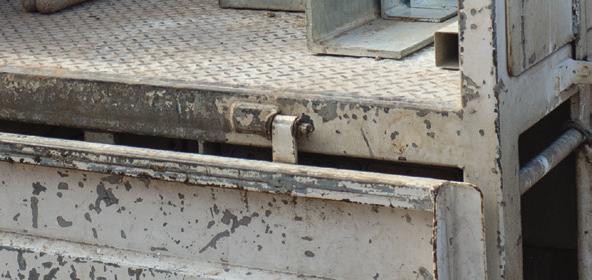

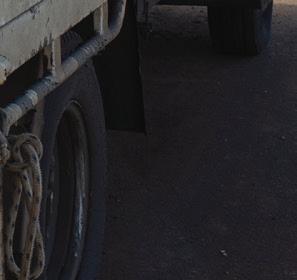
other vehicles, it can create hazardous obstacles in the road, particularly at night or in adverse weather.
The danger is not just to other drivers. Unsecured cargo can shift, impacting your vehicle’s handling, making it more difficult to steer, brake or maintain stability.
And if you’re driving and see unsecured loads, don’t follow behind those vehicles, Brown advised.
Virginia drivers responsible for causing an accident are responsible for covering the damages. If your unsecured load causes an accident:
Your auto liability insurance (which is mandatory in Virginia with minimum coverage requirements of $50,000 for injury/death to one person, $100,000 for injury/death to more than one person, and $25,000 for property damage) would typically cover the damages to the other vehicle and any injuries sustained by its occupants.
If the damages exceed your liability coverage limits, you will be personally responsible for the remaining costs.
The injured party also may choose to pursue a personal injury lawsuit against you for their medical expenses, lost wages, pain and suffering, and other related damages.



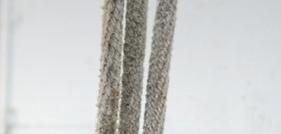

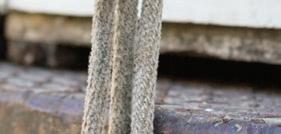



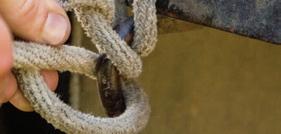





Preventing an unsecured load incident is easier than dealing with the aftermath. Here’s a simple checklist to ensure your cargo is safe and secure:
✔ Choose the right vehicle or trailer. Ensure your vehicle/trailer is appropriate for the size and weight of your load. Distribute weight evenly: Place heavier items on the bottom and distribute weight evenly to maintain balance and stability.
✔ Tie down everything.
Use strong ropes, straps, bungee cords, or chains to secure all items. Don’t rely on friction or the weight of the load alone.
✔ Cover loose materials.
For gravel, sand, dirt, or other loose materials, use a sturdy tarp or cargo net to prevent scattering. Virginia law specifically requires covers for vehicles carrying such materials on paved highways, unless six inches of space between the top of the load and the top of the truck bed or trailer walls is maintained.
✔ Check for overhangs.
Ensure no items are overhanging or dragging on the road
✔ Walk around inspection.
Before driving, walk around your vehicle and trailer to double-check all tie-downs, covers and connections.
✔ Re-check during long trip.
Stop periodically to re-check your load, especially after the first few miles, as items can shift during transit.
Accessing health care remains a challenge for many living in rural communities. Long distances to clinics, limited providers, extended wait times or lack of transportation can turn even the most routine medical visits into logistical hurdles.
Fortunately, expanding telehealth and virtual care options are helping close the gap—bringing health care directly to patients without lengthy drives or taking a day off work.
“You don’t have to leave your home when you feel miserable with a cold or flu,” said Tracy Cornatzer, director of sales for VAFB Health Insurance Solutions. “And it’s nice not having to sit in a crowded waiting room when needing to be seen for something like a rash or pink eye.”
Telehealth and virtual care aren’t substitutes for emergency services or some in-person visits, but they can be efficient, faster options for diagnosing and treating common, non-urgent health concerns.
For example, pink eye or skin irritations can be assessed by a physician via video with prescriptions called in as needed. Cold symptoms, sinus infections, sore throats or mild flu can usually be managed through a virtual consultation instead of a trip to the hospital or doctor’s office.
“And if you need a higher level of care, the nurse or provider will refer you to the appropriate facility,” Cornatzer said.
Although the terms ‘telehealth’ and ‘virtual care’ are used interchangeably, there’s an important distinction, Cornatzer noted.
“Telehealth is generally video conferencing or phone calls with one’s actual physician group during business hours,” she
BY ALICE KEMP
explained. “You need to check with your provider’s practice to see if it offers telehealth visits.”
By contrast, virtual care and virtual visits are completed through remote care provider networks—typically available 24/7 and staffed by multiple licensed providers for patients to choose from. These can include nurse advice lines, mental health services, care monitoring and everyday health services.
“Most health insurance plans offer virtual consults to diagnose and treat a variety of non-emergency medical conditions,” Cornatzer said. “The 24/7 nurse line can be called for guidance or answering general health questions, and nurses also can help locate a provider in your area if needed.”
Before using virtual care and advice lines, first check with your health insurance provider to make sure they offer these services, Cornatzer advised. Familiarize yourself with how to access them and take care of any account signup and registration in advance.
“When you’re ready to use these services, the virtual provider will ask a series of questions to find out what your symptoms are and how long you’ve had them.”
To understand all available telehealth and virtual care services, patients should check with both their doctor’s office and their health insurance provider. Physicians can confirm if telehealth is available within the practice, while insurance providers can explain what’s included for virtual care. Patients should refer to their Certificate of Coverage or call the member services phone number found on their health ID card for associated costs, Cornatzer advised.






Virginia Farm Bureau Health Insurance Solutions® is offering free, online Medicare seminars with information about eligibility, enrollment periods. and plan options.
August 21 at 6 p.m.
September 10 at 10 a.m.
RSVP to your county Farm Bureau, or register online at vafb.com/health/medicare-seminars.

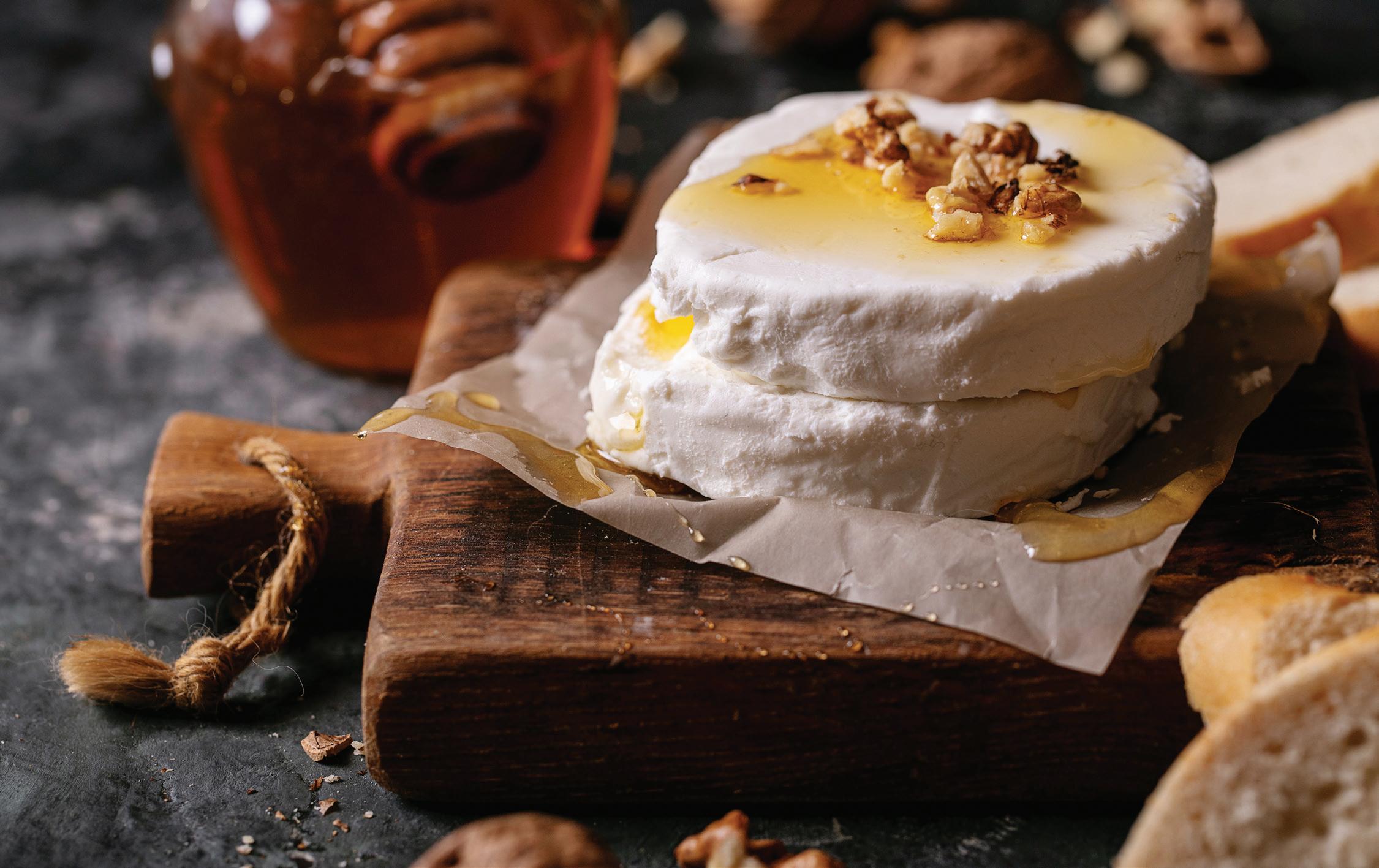
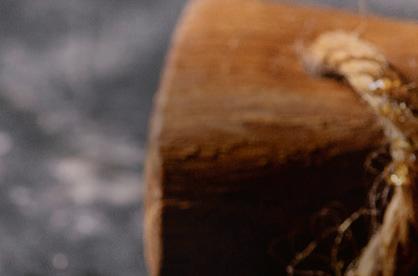

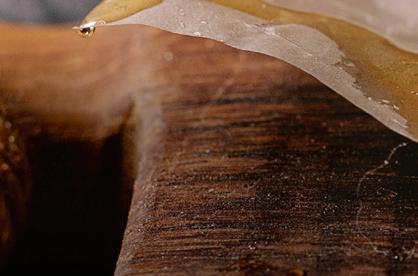
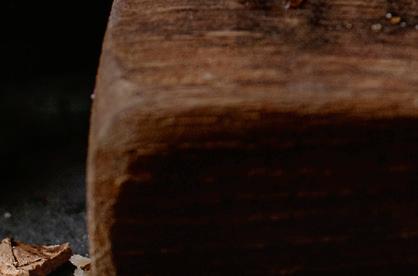

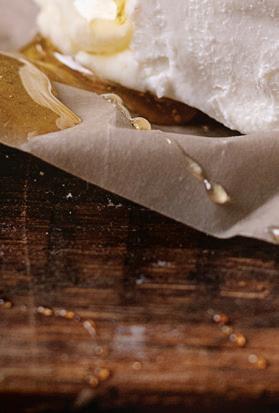

BY CHRISTINA AMANO DOLAN
From creamy to crumbly and everything in between, Virginia’s specialty cheeses are as varied as the animals from which they’re created.
Virginia cheese comes in a wide variety of tastes, textures and aromas—thanks to the state’s robust network of dairy cows, goats and sheep.
“A lot of people don’t realize that you can make any type of cheese with different milk,” noted Joshua Gaul of Cardinal Lane Farm in King and Queen County.
The longtime cheesemaker recently began crafting an array of artisan goat cheeses from his own herd. He channels his love for the craft into his unique cheddar curds, feta, Manchego, mozzarella and eight flavors of chevre—the farm’s signature cheese.
Gaul’s cheesemaking process begins with pasteurizing the goats’ milk, then heating it to a specific temperature to separate the liquids from the solids. After forming his “starter culture,” he uses different techniques to create various cheeses. To make his chevre, he simply adds rennet to the culture, lets it sit overnight, and drains and processes it the next day.
“The chevre is our moneymaker,” he said. “Because of our goat breed and what they’re fed, our chevre comes out really creamy—almost like a cream cheese—and it’s very versatile.”
Gaul’s still-growing herd of 30 Nigerian Dwarf does are “excellent for cheesemaking.” They allow him to extract larger cheese yields from a smaller amount of milk compared to other goat breeds.

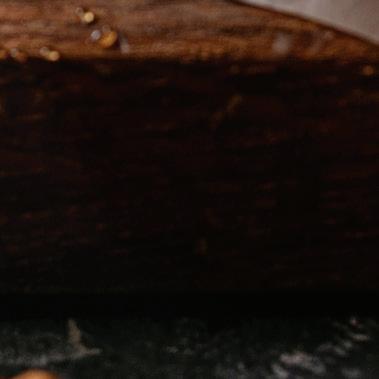
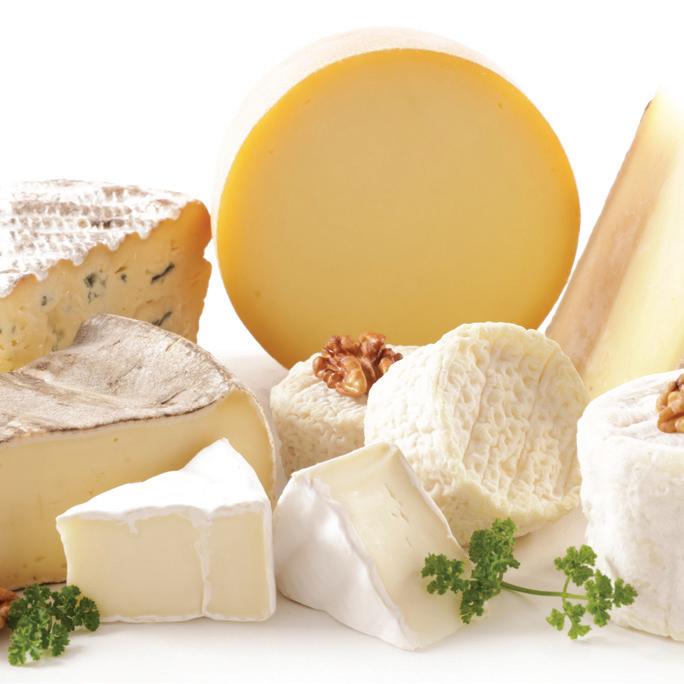

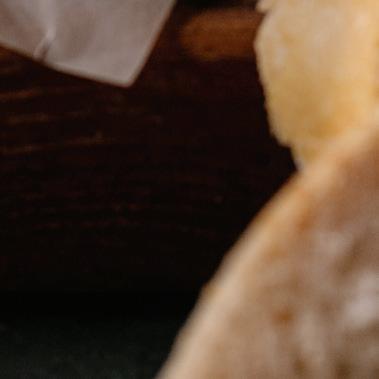
“We’ve had a lot of people who don’t like goat cheese end up buying our product after trying it, and that’s really because of our herd,” Gaul added.
The fourth-generation dairy farmers of Harvue Cheese in Clarke County pride themselves on “high-quality cheese from highquality cows.” The farm’s 300 Holstein cows are milked twice daily, with every 50,000 pounds of milk transformed into about 5,000 pounds of cheese at a partner facility.
The Hardesty family launched its cheese business in 2019 after the Virginia Foundation for Agriculture, Innovation and Rural Sustainability helped the farm secure a USDA Value-Added Producer Grant.
“We decided to focus on cheddar since it gave us the most versatility,” noted Ashley Hardesty. “And the longer it sits, the better it gets.”
She doesn’t touch her cheddar for at least three months to let the flavors develop. Their most popular cheddars are hickory smoked, garlic and chive, jalapeno and sundried tomato and peppercorn—Hardesty’s personal favorite.
“Some cheeses, you love to eat them with a cracker or something else, but I can enjoy that one by itself,” she remarked.
Cheese lovers can visit the farm for pickup or find Harvue Cheese at a variety of Virginia markets.
Customers can sample and purchase Gaul’s cheeses at the Great Big Greenhouse in Richmond on Thursdays, 10 a.m. to 2 p.m. and Yorktown Market Days on Saturdays, 10 a.m. to 2 p.m. His products also can be found at select markets.
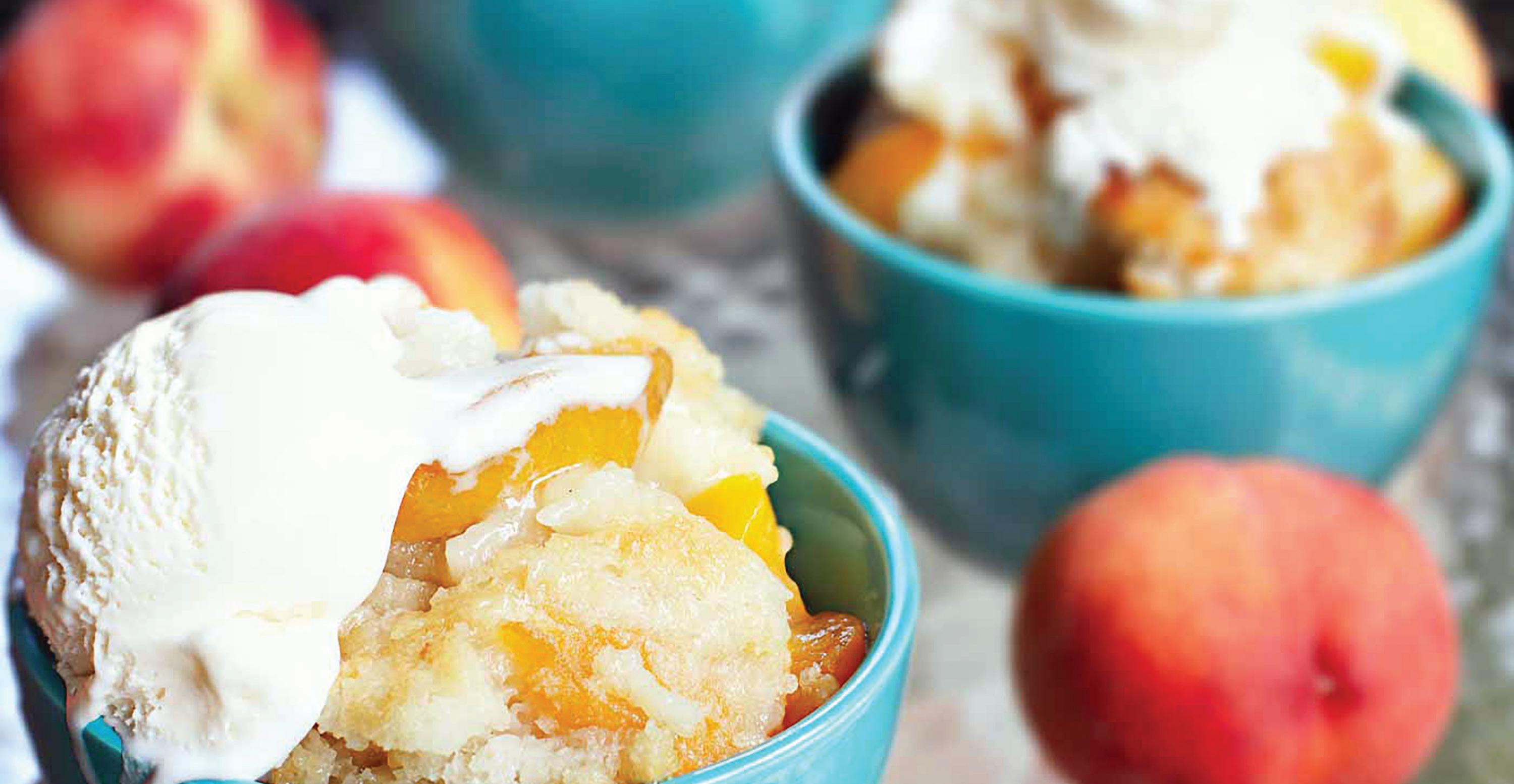



Flip through an old cookbook or step into a country kitchen and you’re bound to find an array of baked fruit desserts—many with names that reflect their quirky appearances and regional influences.
There’s the classic cobbler topped with a biscuit-like batter; a crisp with its oatand-nut crunch; and the crumble, a close relative with a buttery, streusel topping. Then come the more delightfully named treats, like the slump that gently collapses onto a plate and a buckle that sinks and “buckles” as fruit bubbles in the batter.
And don’t forget the brown Betty with its buttery breadcrumbs or the rustic charm of the pandowdy with its stewed fruit and broken pie crust baked until golden.
No matter what you call them, or what they look like, if it’s fruit and dough then it’s bound to be delicious. Celebrate how these classic comfort desserts showcase peak-season fruits, and are adaptable and easy to make.
For the peach filling:
¼ cup granulated sugar
1 tablespoon cornstarch
¼ teaspoon ground cinnamon or nutmeg
5 cups peeled, sliced, fresh peaches
For the crumble topping:
1 cup flour
½ cup packed brown sugar
1 teaspoon baking powder
¼ teaspoon salt
½ cup butter, room temperature
DIRECTIONS
Heat oven to 375°.
Spray an 11-by-7-by-2-inch baking dish with nonstick spray.
In a large bowl, whisk the sugar, cornstarch and cinnamon or nutmeg. Add the peaches, and stir to coat. Pour the peaches and juices into the baking dish.
In a separate large bowl, whisk together the flour, sugar, baking powder and salt. Cut in the butter to form coarse crumbs. Sprinkle crumb topping evenly over the peaches. Bake 35-40 minutes, or until the peaches are bubbling and the topping is golden brown.
Serve warm or cold, with ice cream, if desired.
—Recipe adapted from EatWheat.org


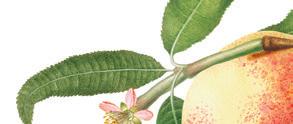

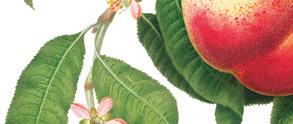
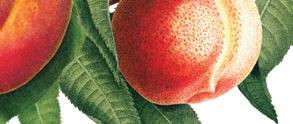



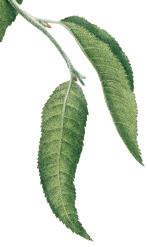

INGREDIENTS
½ cup (1 stick) butter at room temperature
½ cup granulated sugar
¼ cup light brown sugar
3 large eggs at room temperature
1 tablespoon finely grated lemon zest
1 teaspoon vanilla or almond extract
1¼ cups all-purpose flour
½ teaspoon salt
½ teaspoon nutmeg, fresh or ground
¼ teaspoon baking powder
4-5 cups fresh mixed berries
powdered sugar for dusting, optional
DIRECTIONS
Heat oven to 375°.
Butter a 9” round cake pan or 9-by-9-inch square baking dish.
In the bowl of a mixer, add the butter, granulated and brown sugars, and beat until light and fluffy.
Add the eggs one at a time, incorporating each one until fully combined. Add the lemon zest and extract, and continue beating until combined.
In a separate bowl, whisk the flour, salt, nutmeg and baking powder. Slowly add to the egg mixture, and stir to combine.
Gently fold the berries into the batter, then evenly spread batter into the prepared pan. Sprinkle with extra 2 teaspoons of granulated sugar.
Bake 40-45 minutes until lightly brown and fruit is bubbling. Remove from the oven, and allow to cool. Sprinkle with powdered sugar if desired.
—Recipe adapted from the Home Baking Association

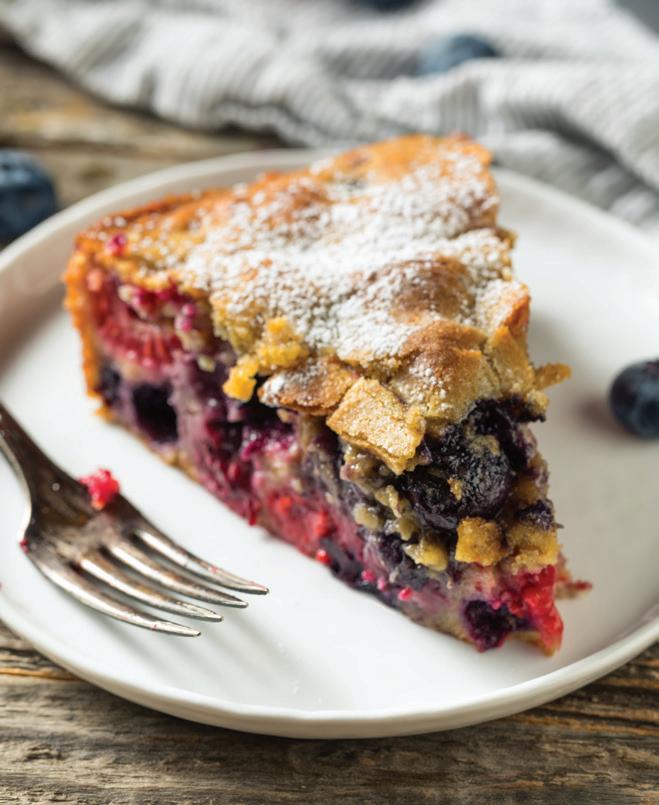
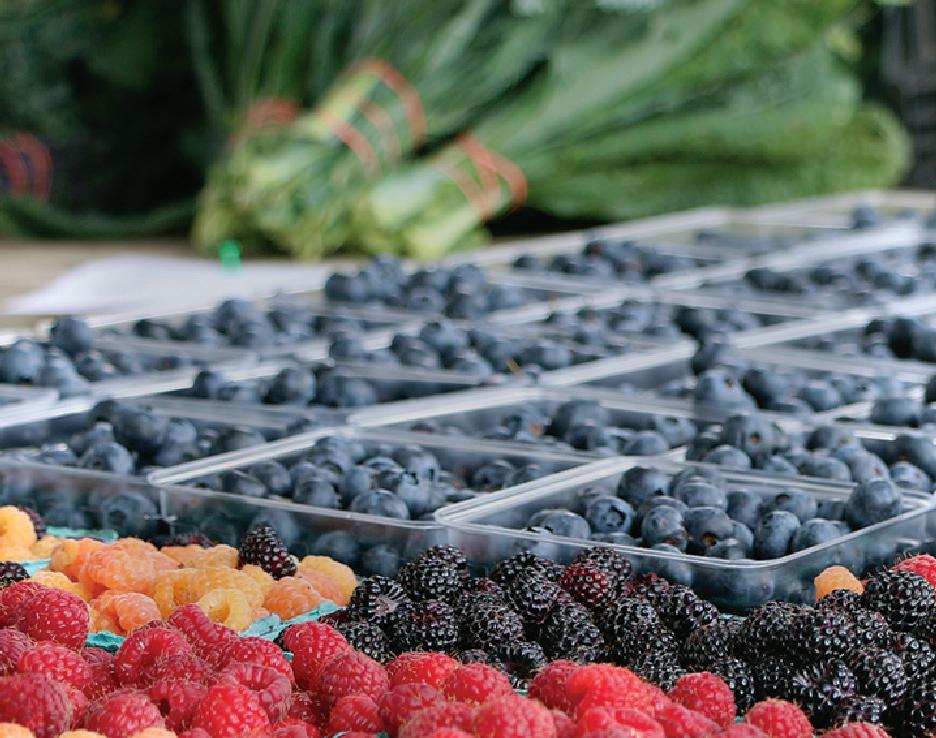
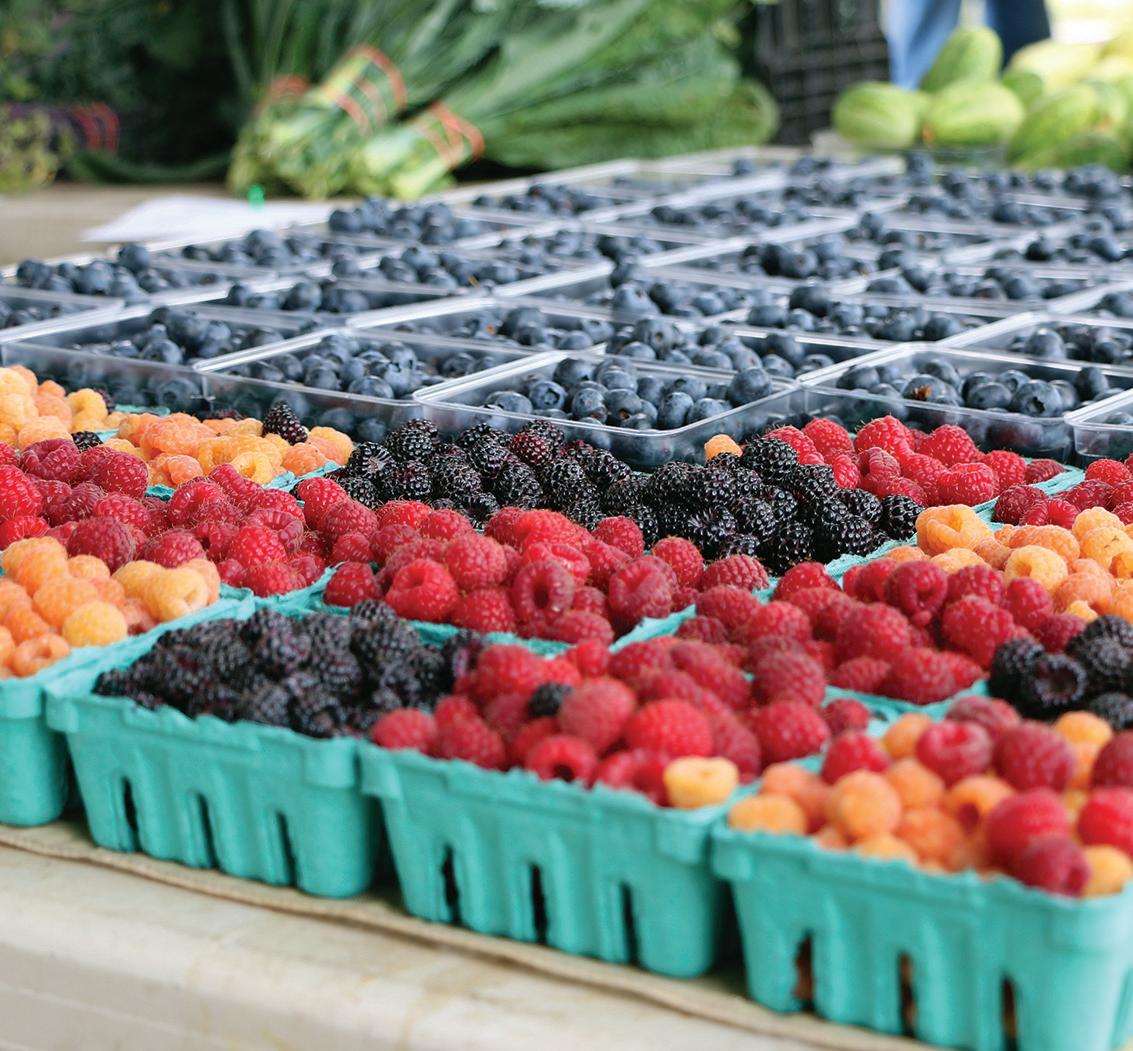
INGREDIENTS
6 medium tart apples, pared and thinly sliced (about 6 cups)
½ cup sugar
½ teaspoon ground cinnamon
¼ teaspoon salt
¼ teaspoon ground nutmeg
½ cup maple syrup
3 tablespoons water
2 tablespoons melted butter or margarine
1¼ cups all-purpose flour
¼ teaspoon salt
⅓ cup shortening
3 tablespoons milk
3 tablespoons butter or margarine, melted ice cream, heavy cream or whipped cream, optional
Heat oven to 350°.
In a large bowl, mix the apples, sugar, cinnamon, salt, nutmeg and syrup. Add the mixture to an ungreased 2-quart casserole dish.
In a small bowl, mix water and butter, and pour over the apple mixture.
Mix the flour and salt and cut in the shortening. Sprinkle in the milk, 1 tablespoon at a time, mixing until the flour is moistened.
Form the pastry dough into a ball and then flatten it out on a lightly floured cutting board.
Roll the dough out until it’s large enough to fit on top of the casserole dish. Place over the apples, and brush with the melted butter.
Bake for 30 minutes, then remove from the oven. Cut the crust into small pieces and mix the pieces into the apple filling.
Bake until the apples are tender, about 30 minutes. Serve hot with either ice cream, a dollop of heavy cream or whipped cream, if desired.
—Recipe adapted from the Upper Hudson Maple Producers Association

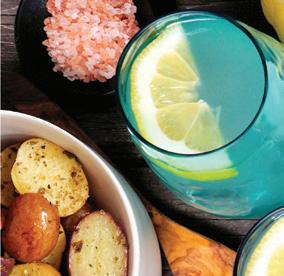
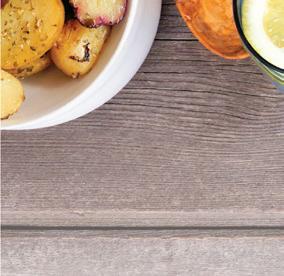
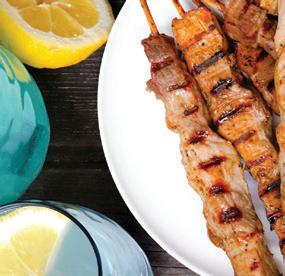

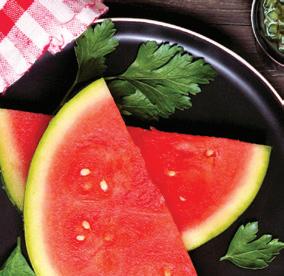


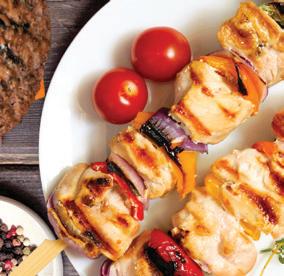
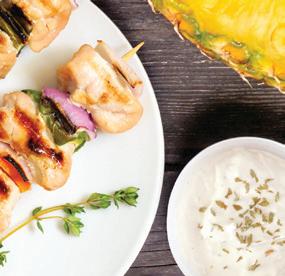


BY ALICE KEMP
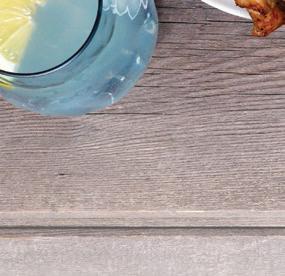
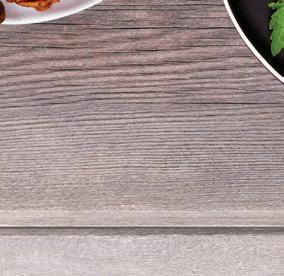

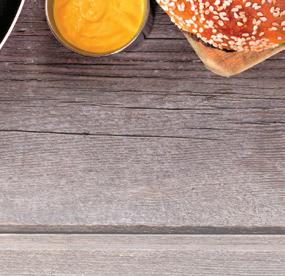
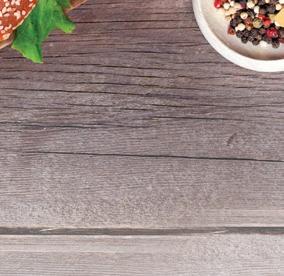

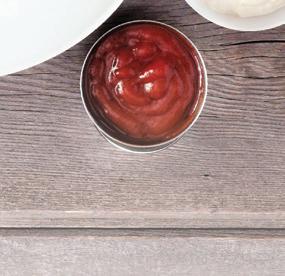
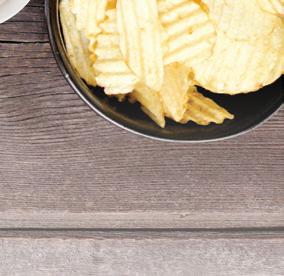



It’s prime time for barbecues, cookouts and picnics, but the summer also brings risk for foodborne illness.

That’s why experts are reminding the public to take care when eating outdoors, where high temperatures create ideal conditions for bacteria to multiply. The Centers for Disease Control and Prevention estimates that 48 million people get sick from a foodborne illness each year, leading to 128,000 hospitalizations and 3,000 deaths.
The U.S. Department of Agriculture also reports that foodborne illnesses spike during summer as more people eat al fresco. Outdoor settings often lack the environmental and safety controls of a kitchen, like refrigeration, washing facilities and sanitized prep areas.
“Safe food handling when eating outdoors is critical,” emphasized Melissa Wright, Virginia Tech food safety expert.
To reduce risk of foodborne illness, Wright recommends four key practices—clean, separate, cook and control temperatures. Before prepping or cooking, wash hands and clean surfaces thoroughly. If there’s no running water, use a water jug, soap and paper towels.
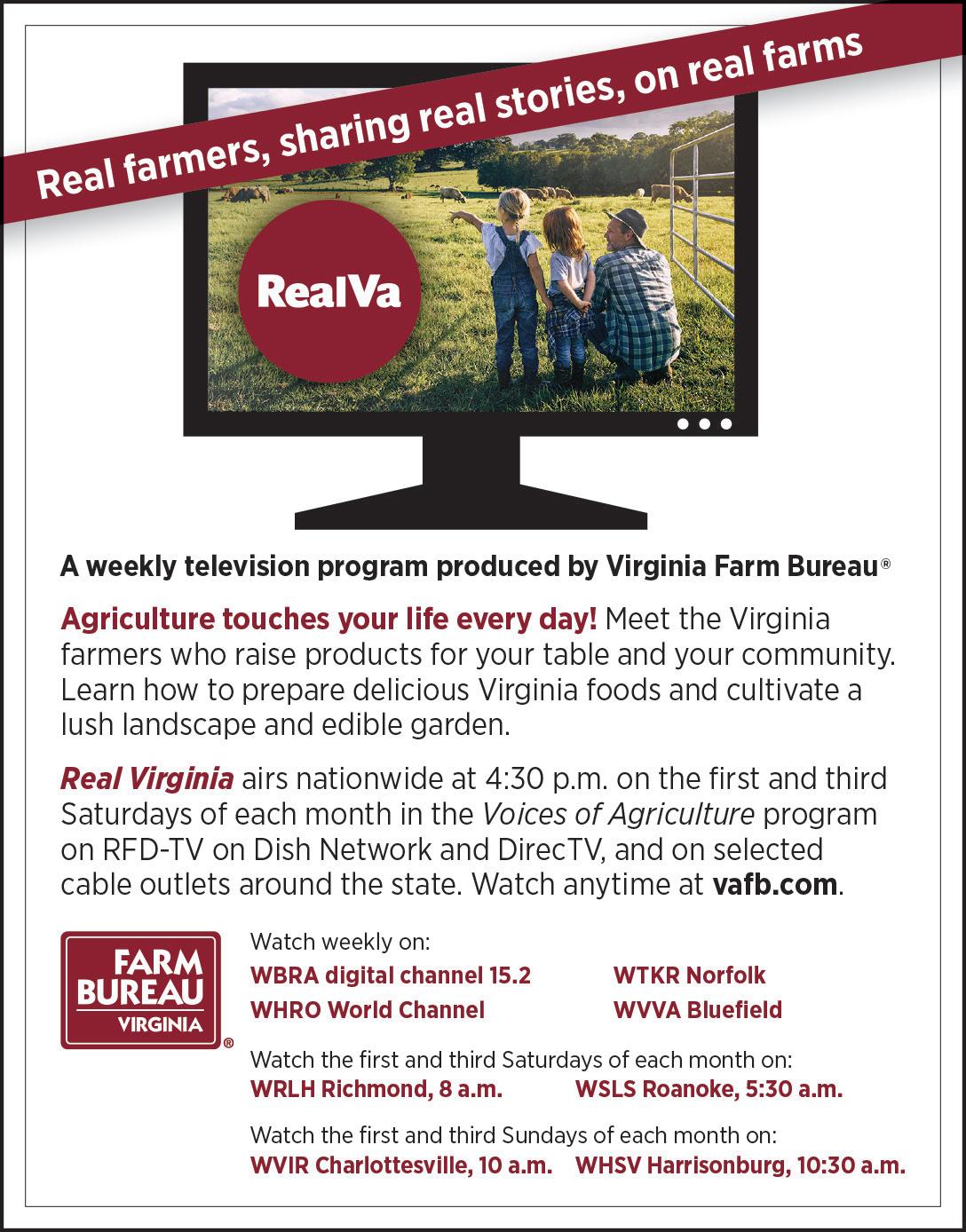



Always keep raw meats and seafood, raw fruits and vegetables and prepared foods separated to avoid cross-contamination. And never reuse utensils between foods unless they’ve been washed in hot soapy water.
When cooking, follow temperature guidelines to ensure food is safe to consume. Steaks, roasts, pork and fish should be cooked to an internal temperature of 145 degrees, ground meats to 160 degrees and poultry to 165.

Once everything is cooked and ready, keep cold foods cold and hot foods hot. Avoid the “danger zone” between 40 and 140 degrees, when bacteria can form and quickly multiply.
Finally, keep uninvited visitors away from the party.
“Insects will land on just about anything and transfer microorganisms from place to place with reckless abandon,” Wright warned.
Research conducted at Pennsylvania State University found that bugs like houseflies can transmit as many as 65 diseases to humans.
For more information on food safety when dining outdoors, visit bit.ly/4066HW6 or bit.ly/4kFBsJP
Virginia Farm Bureau® Mutual Insurance Co. customers can enroll their policies in the company’s paperless option for quick, easy access to insurance documents and policy information.
Paperless enrollees have around-the-clock access to policy documents and statements. Additionally, they can pay their bills online, review important documents and receive email alerts when new documents become available.
Paperless services are available on most VFBMIC products across all lines of business.
Policyholders can enroll in the paperless option by logging in to their account on vafb.com/memberlogin. Customers who don’t have an online account may register at vafb.com/ membership-at-work/membership/join-now
Once logged in, eligible policies for paperless will be listed, and customers can choose which policies to enroll. Customers also can enroll their policies by calling their county Farm Bureau office.
